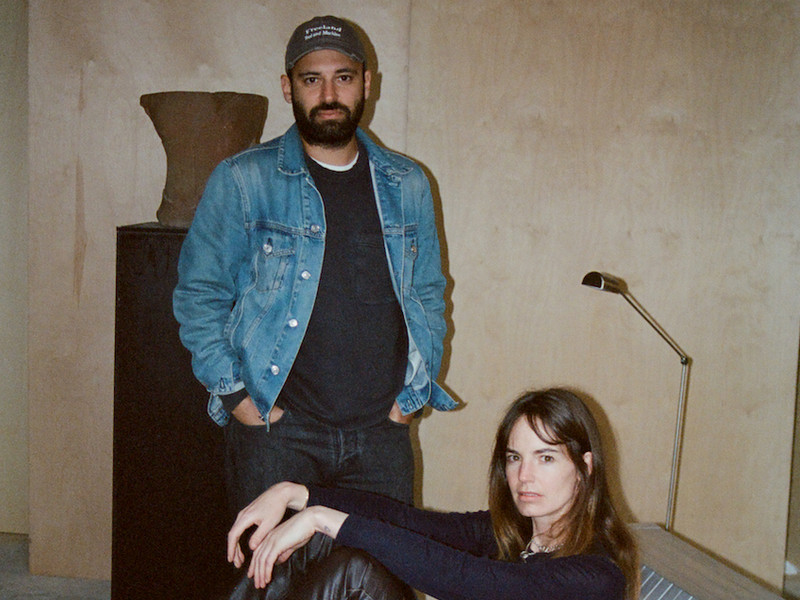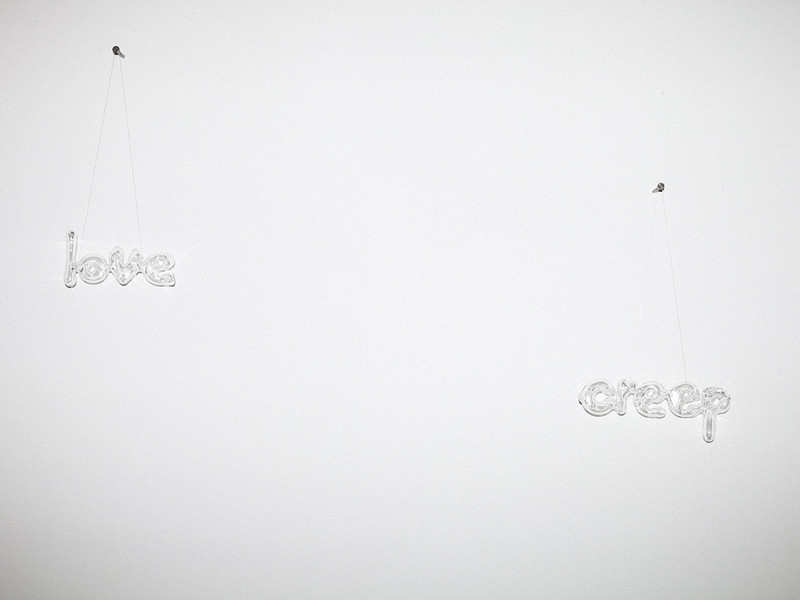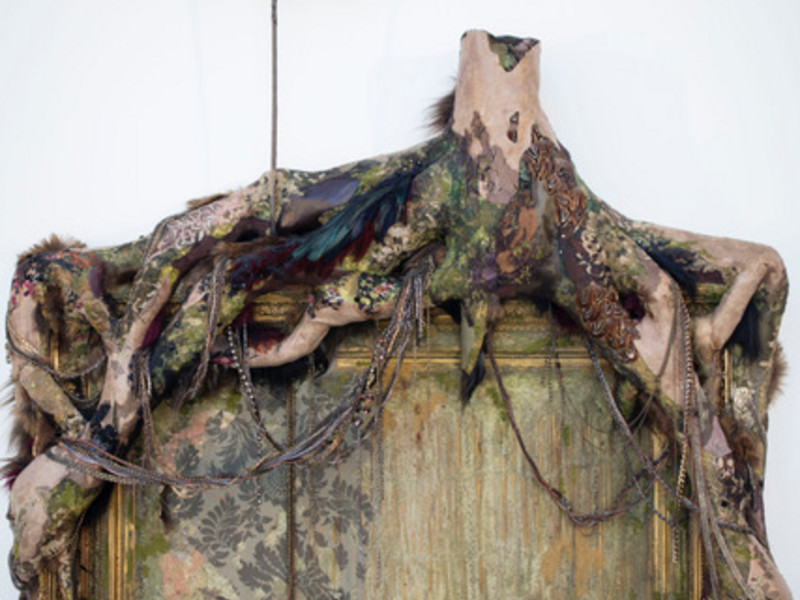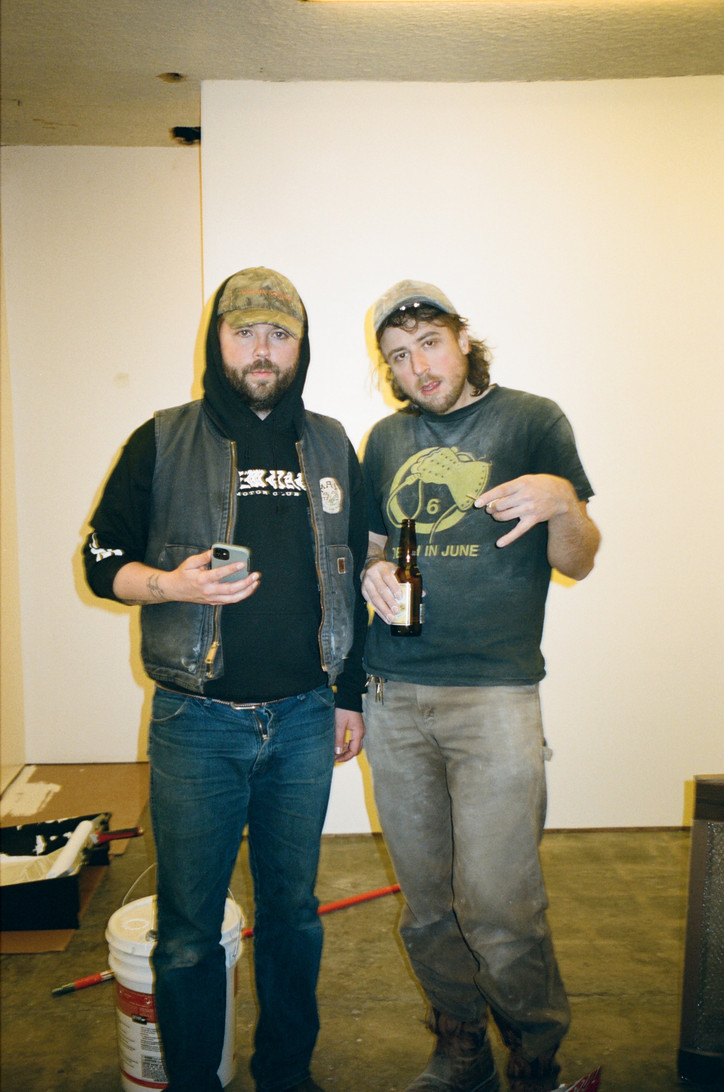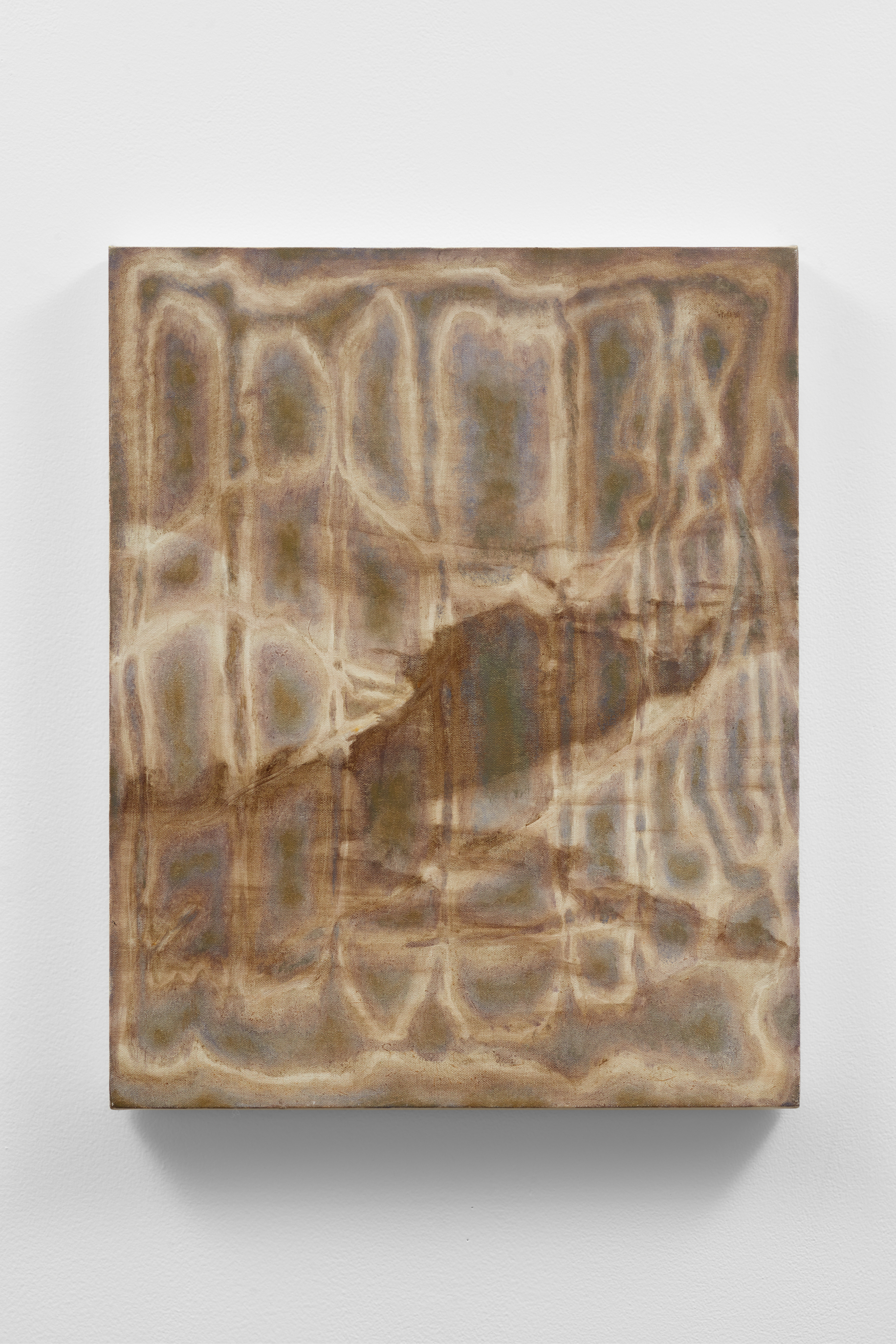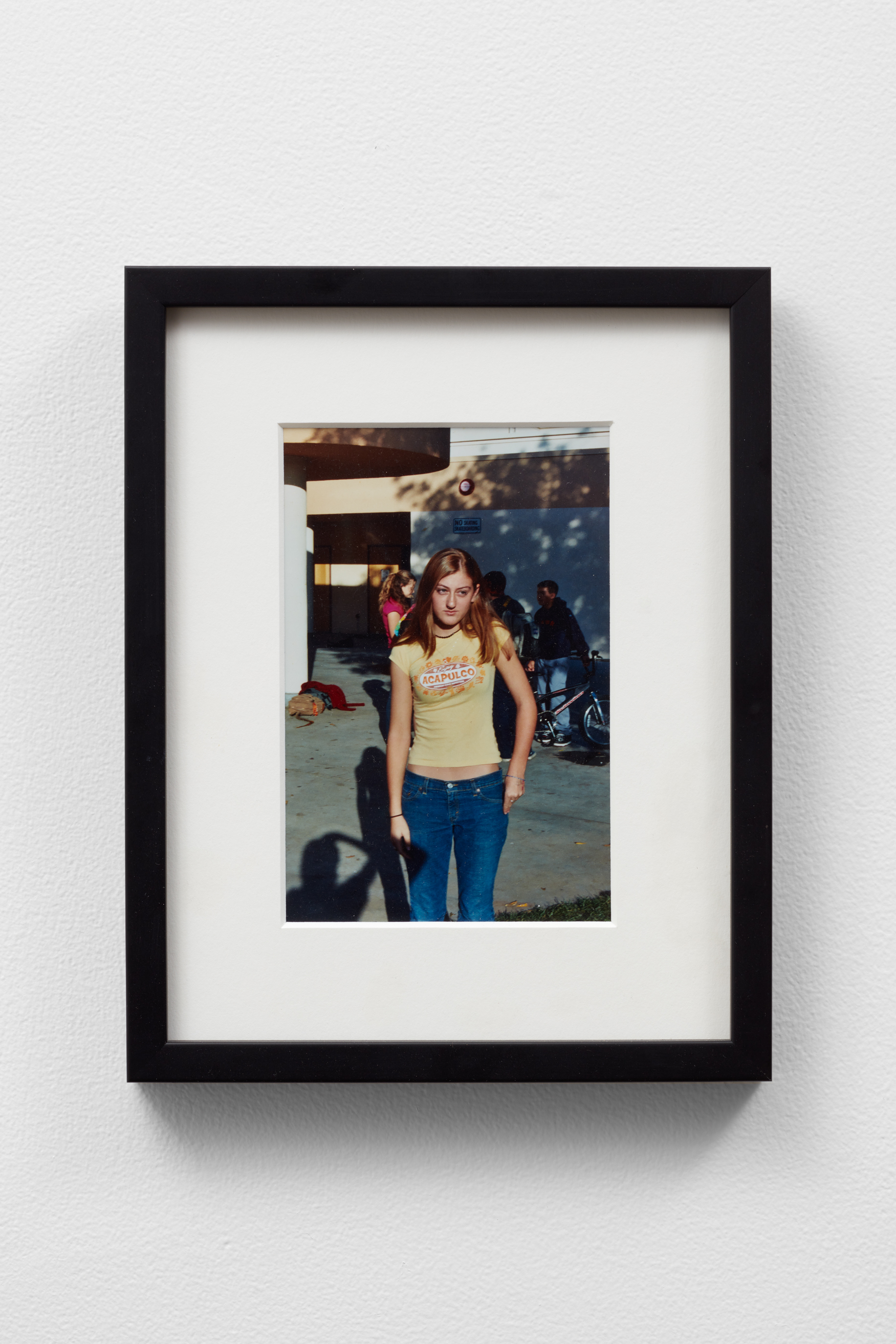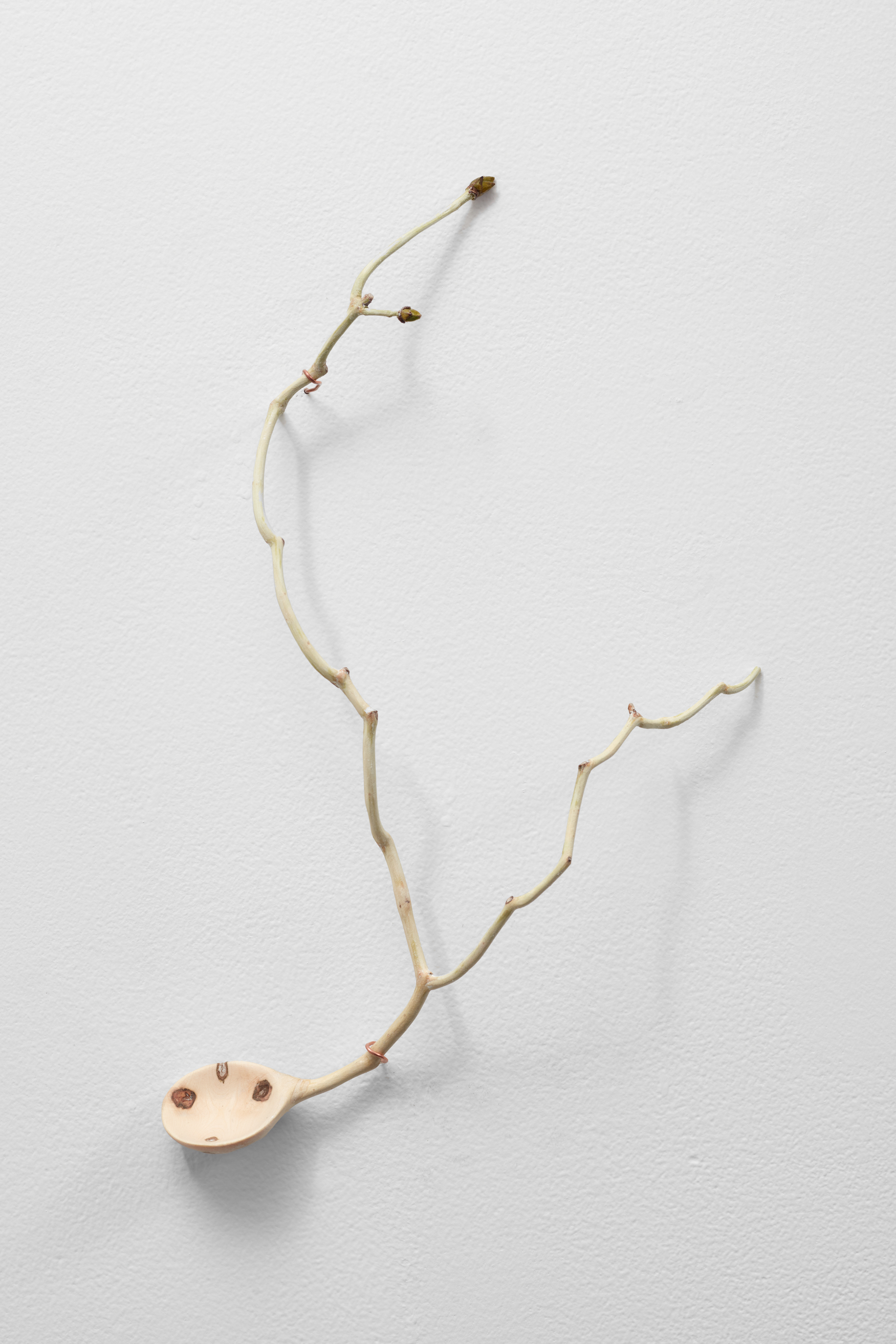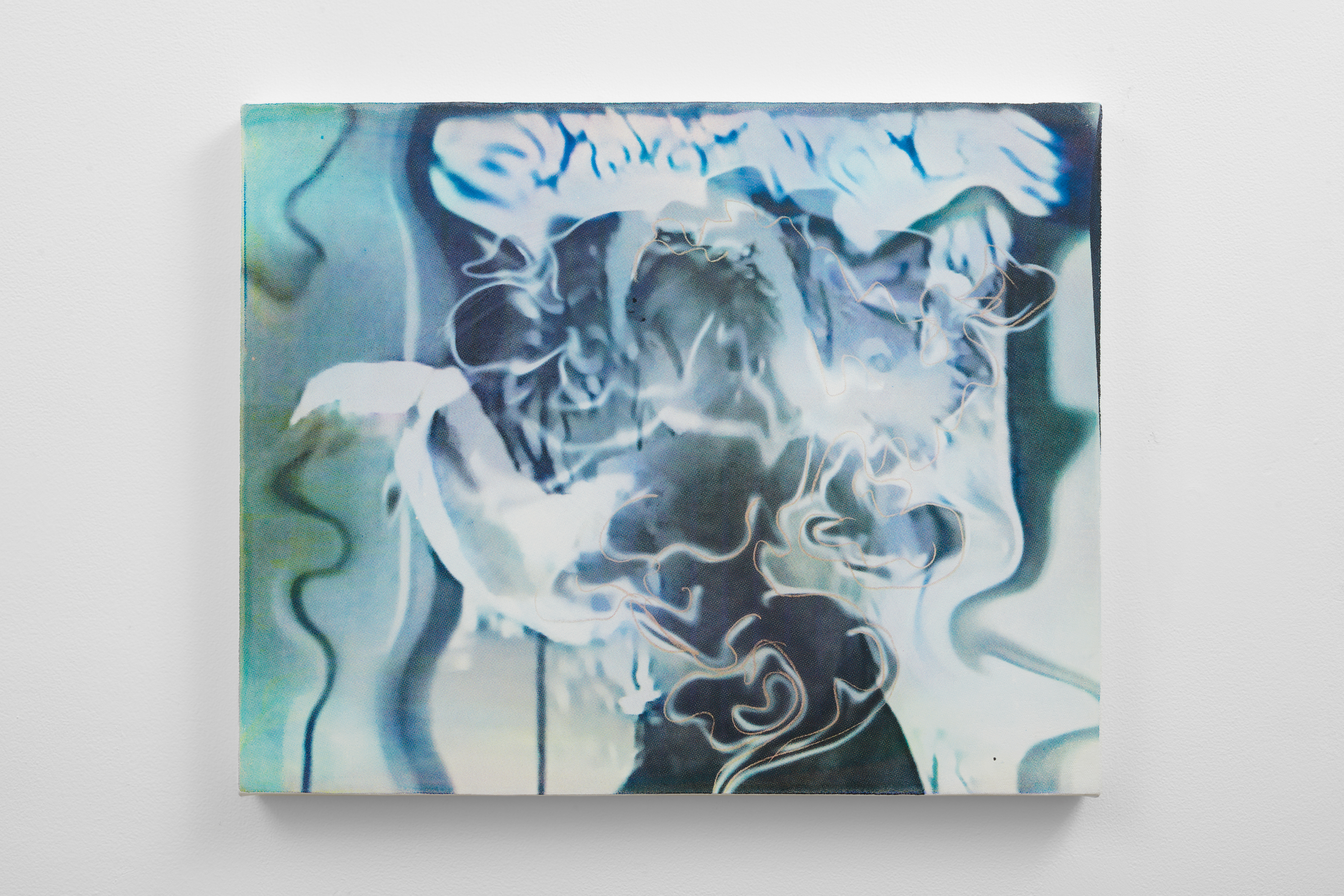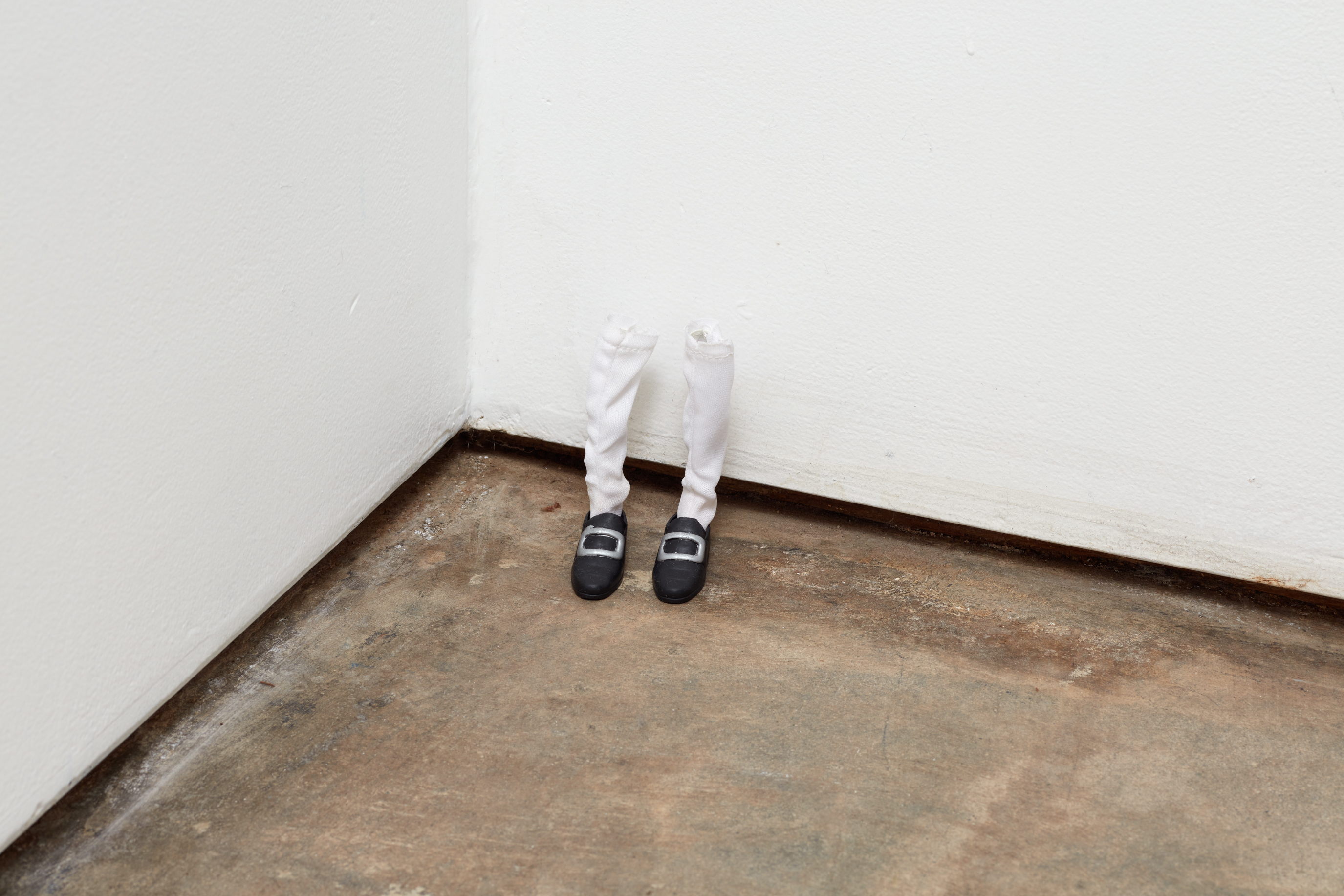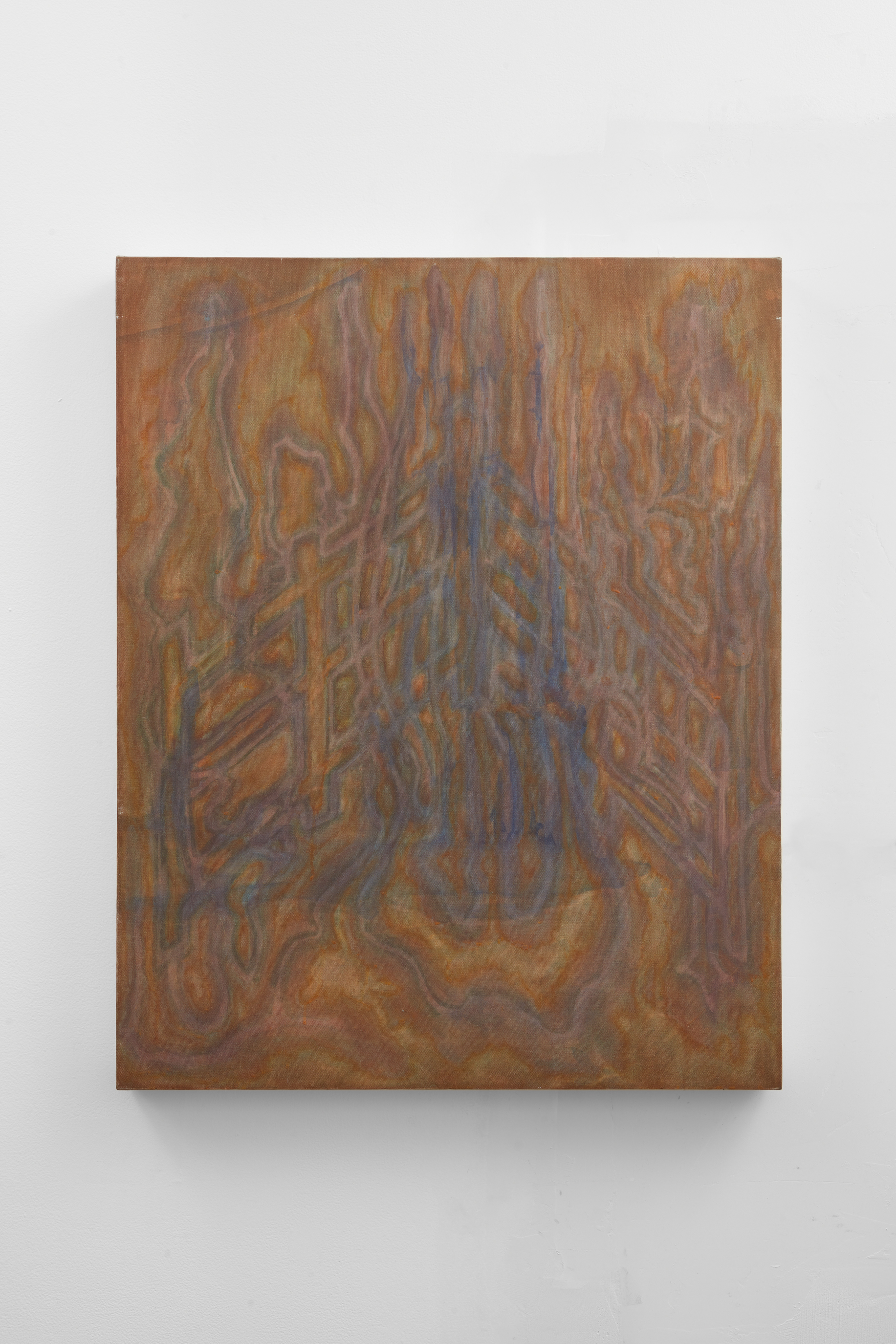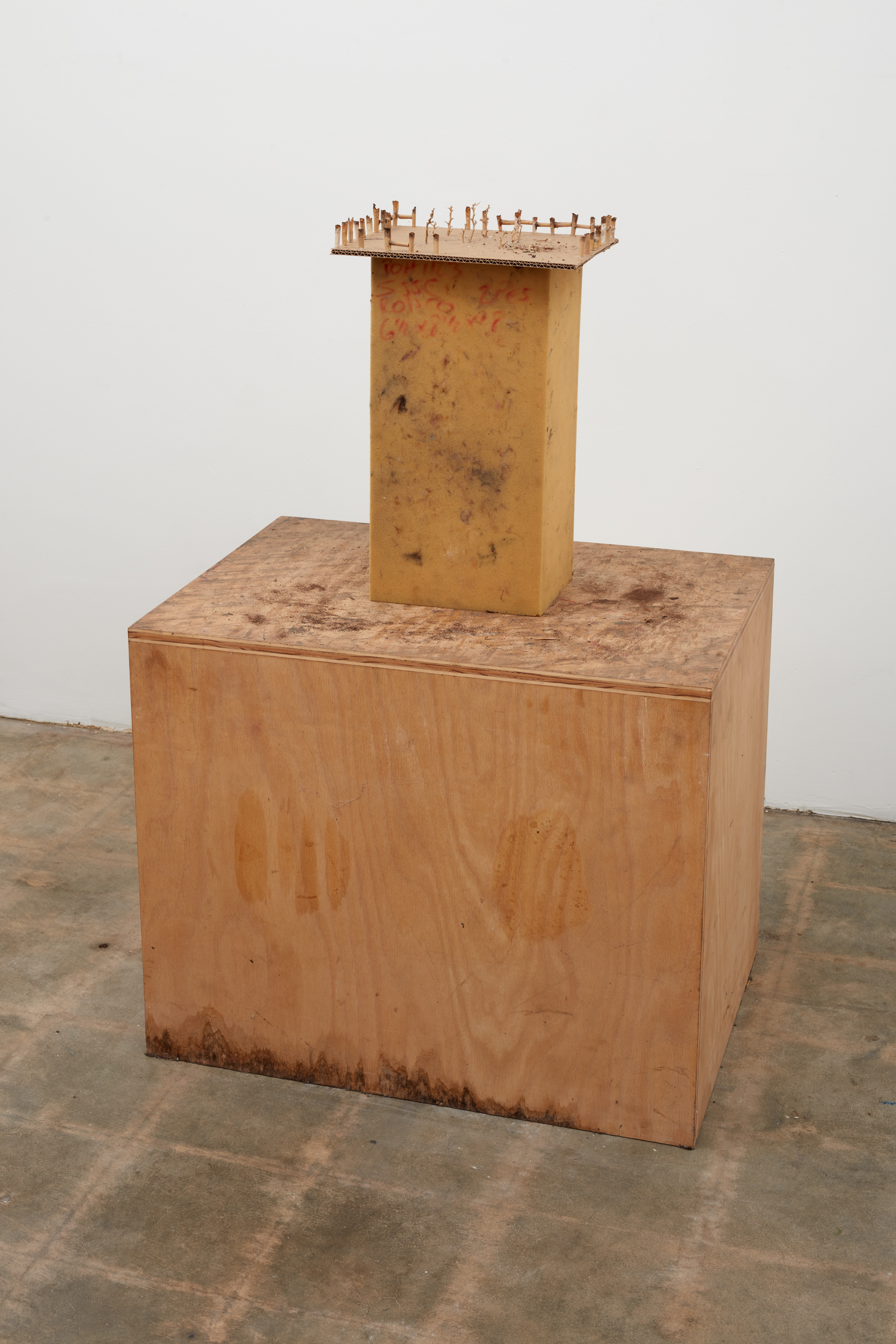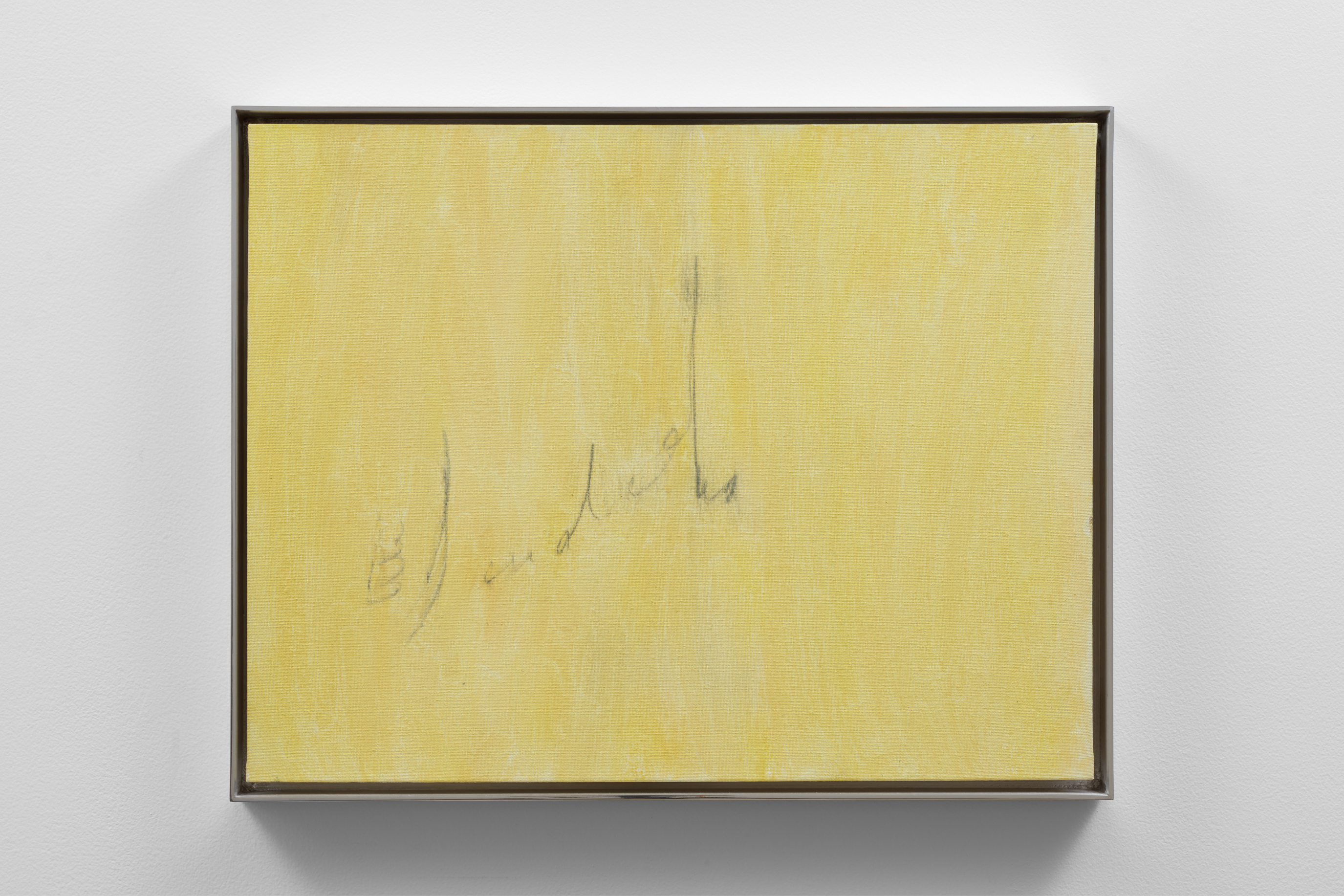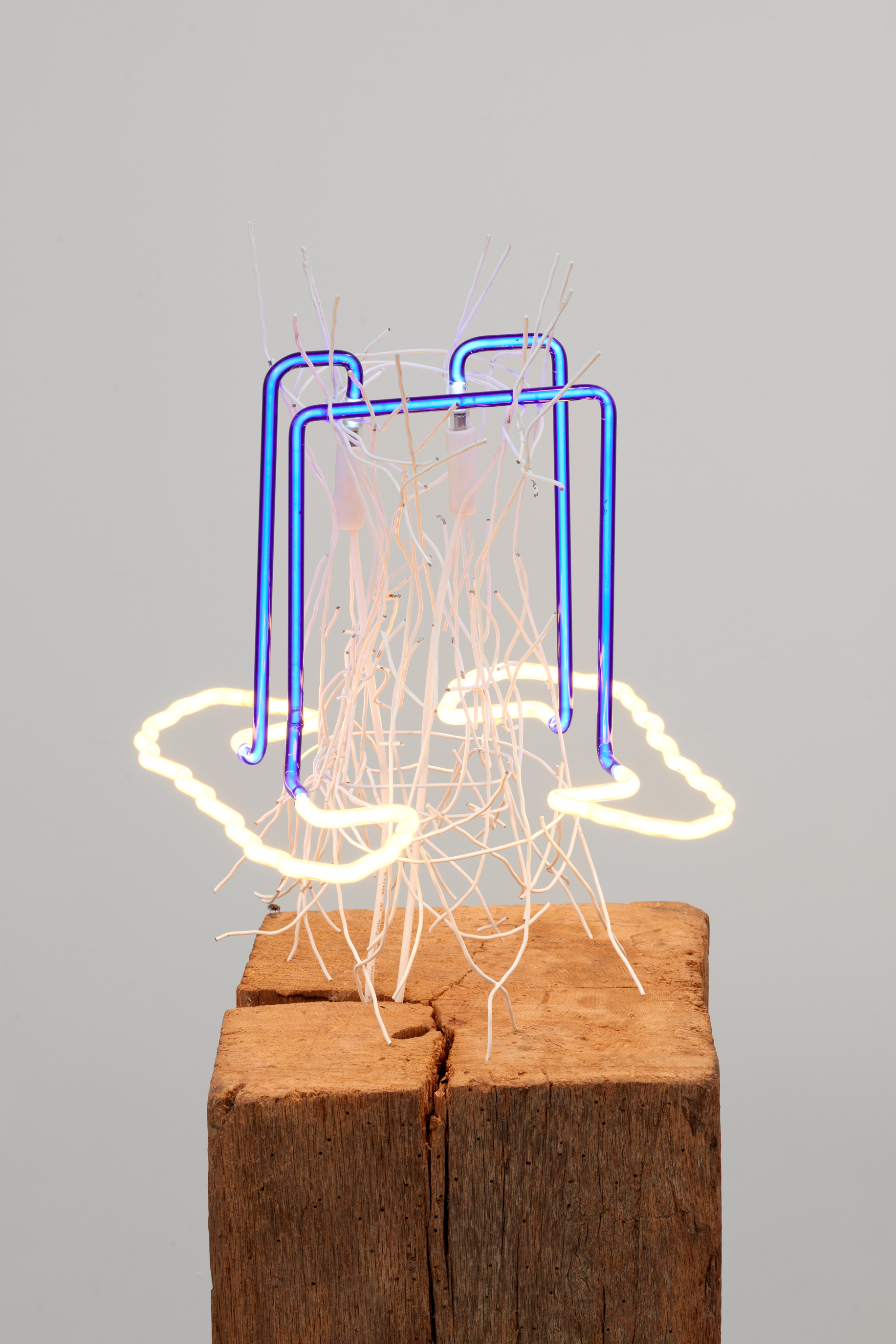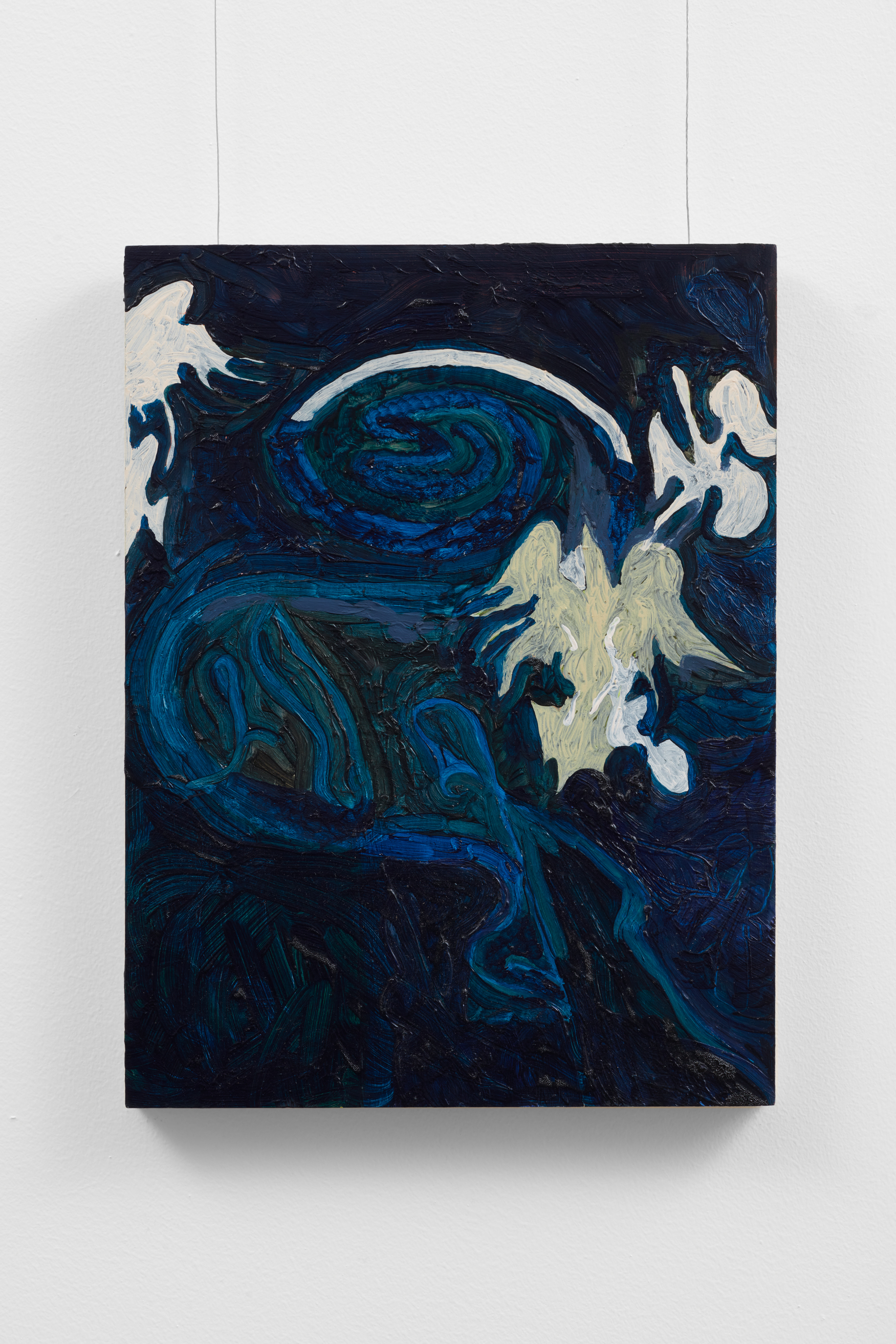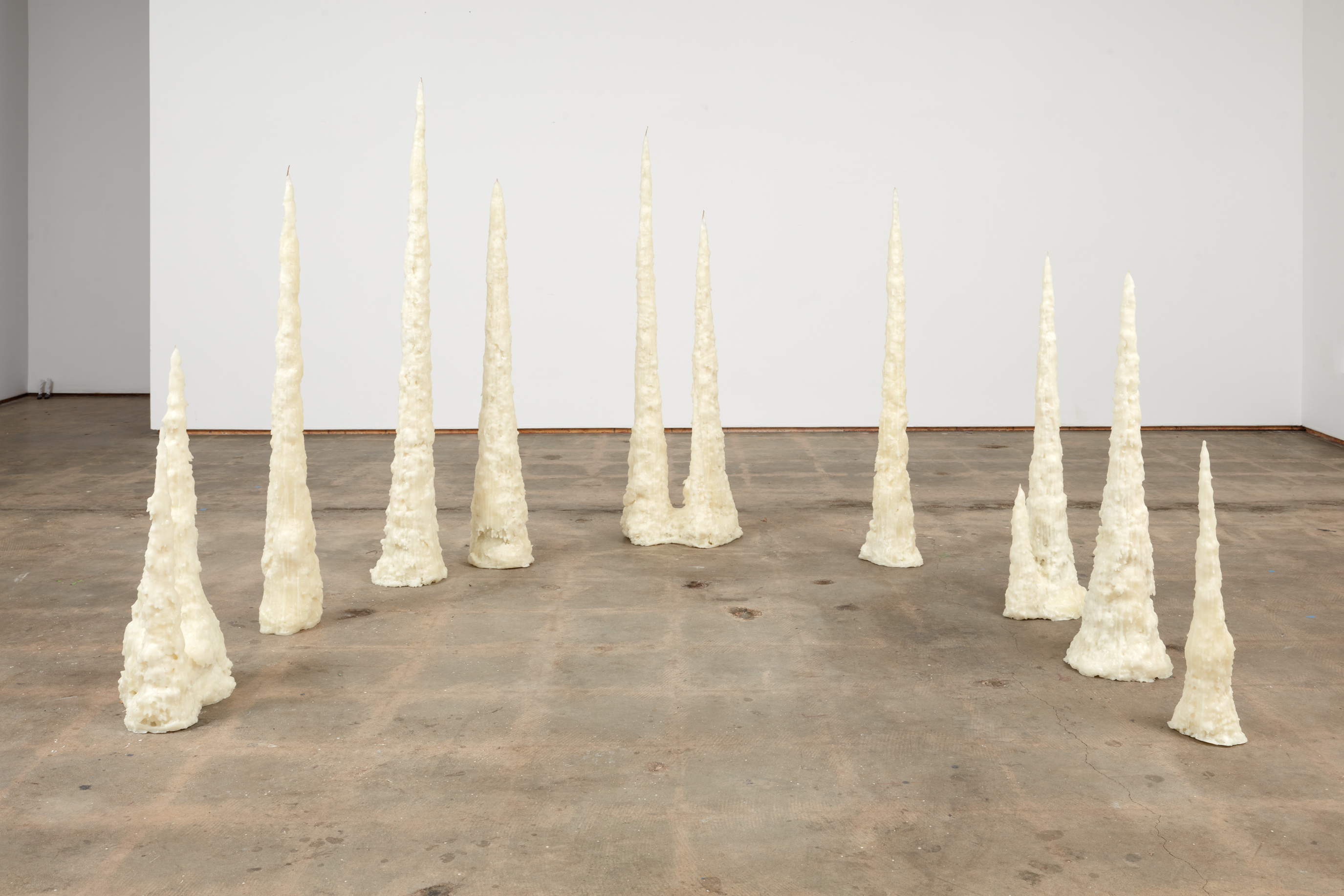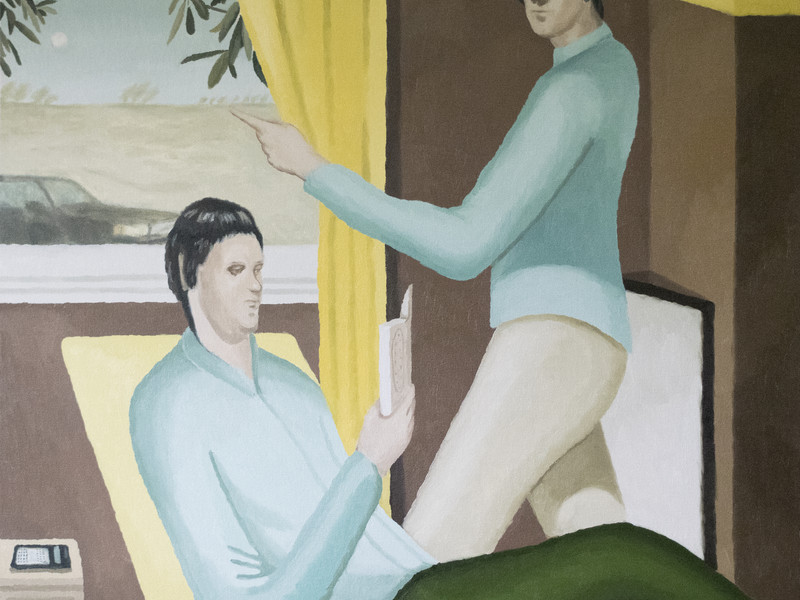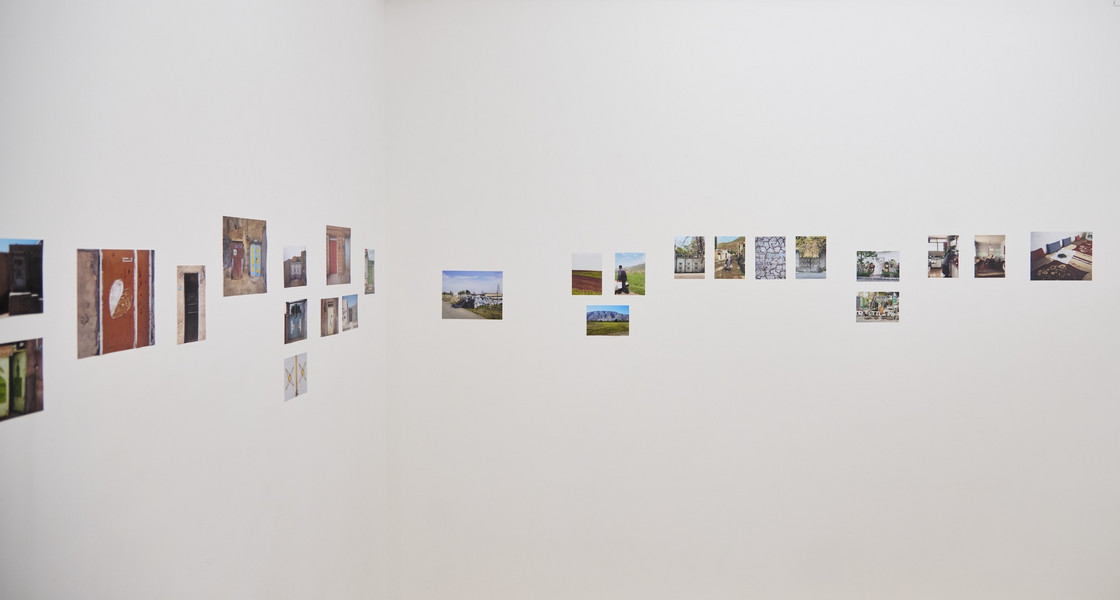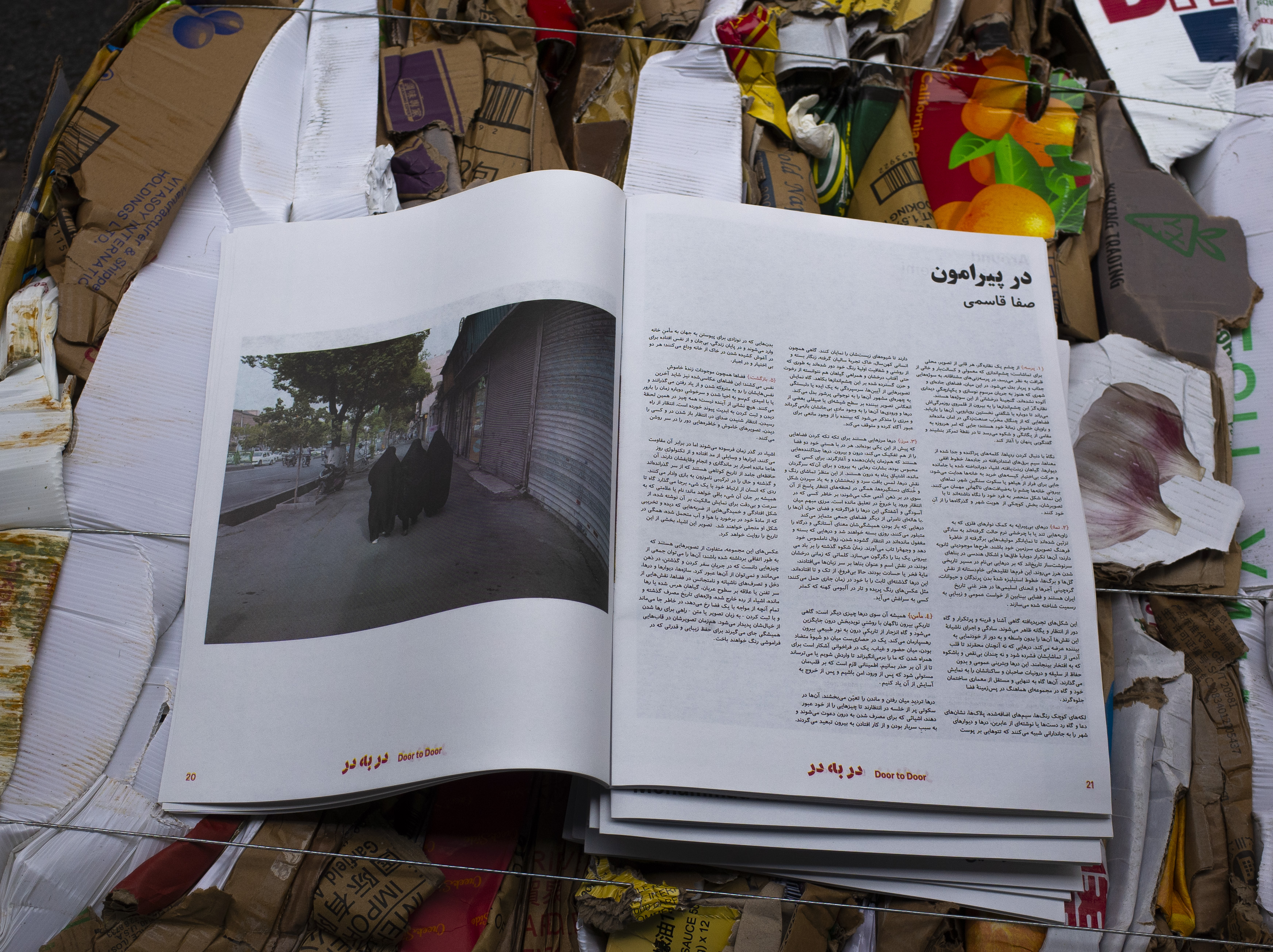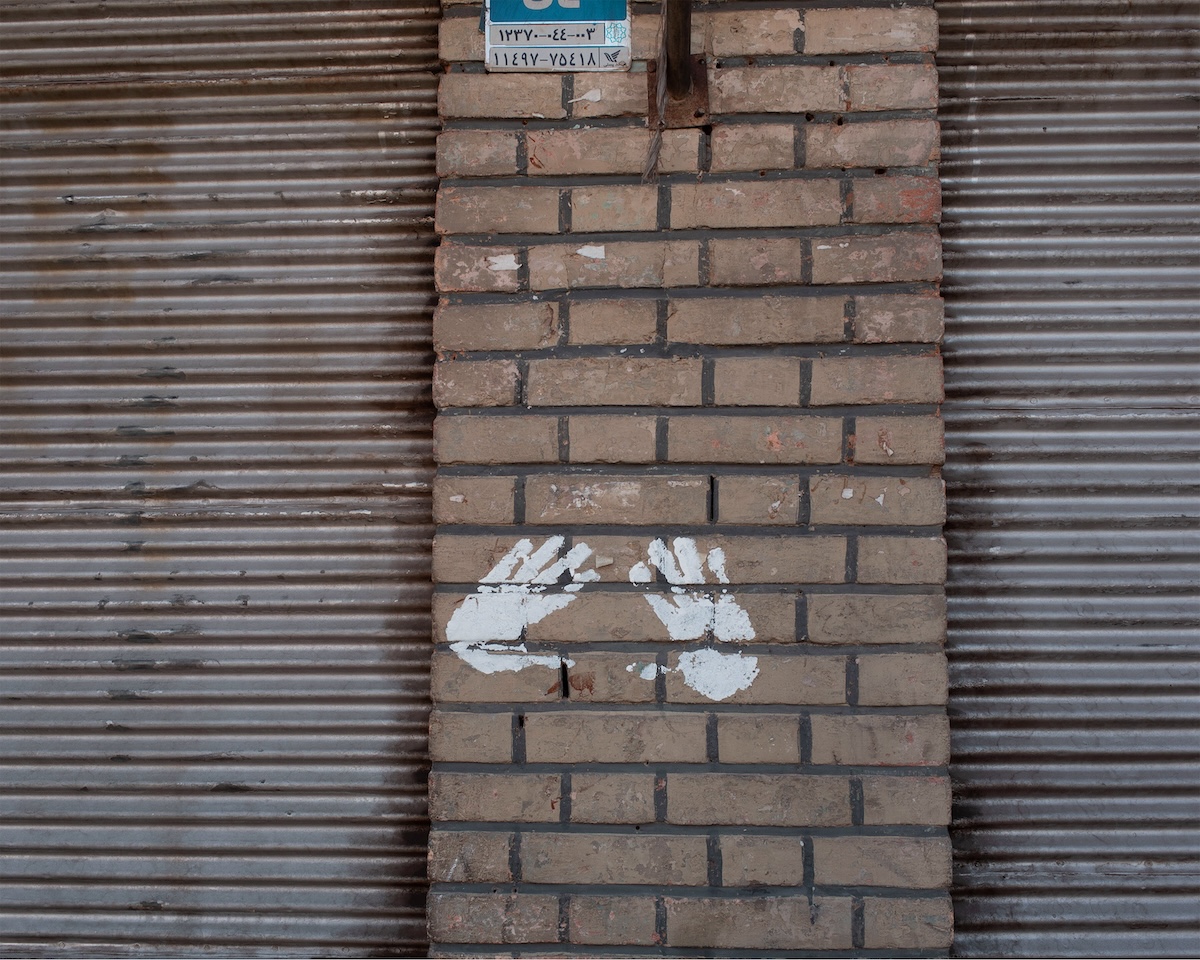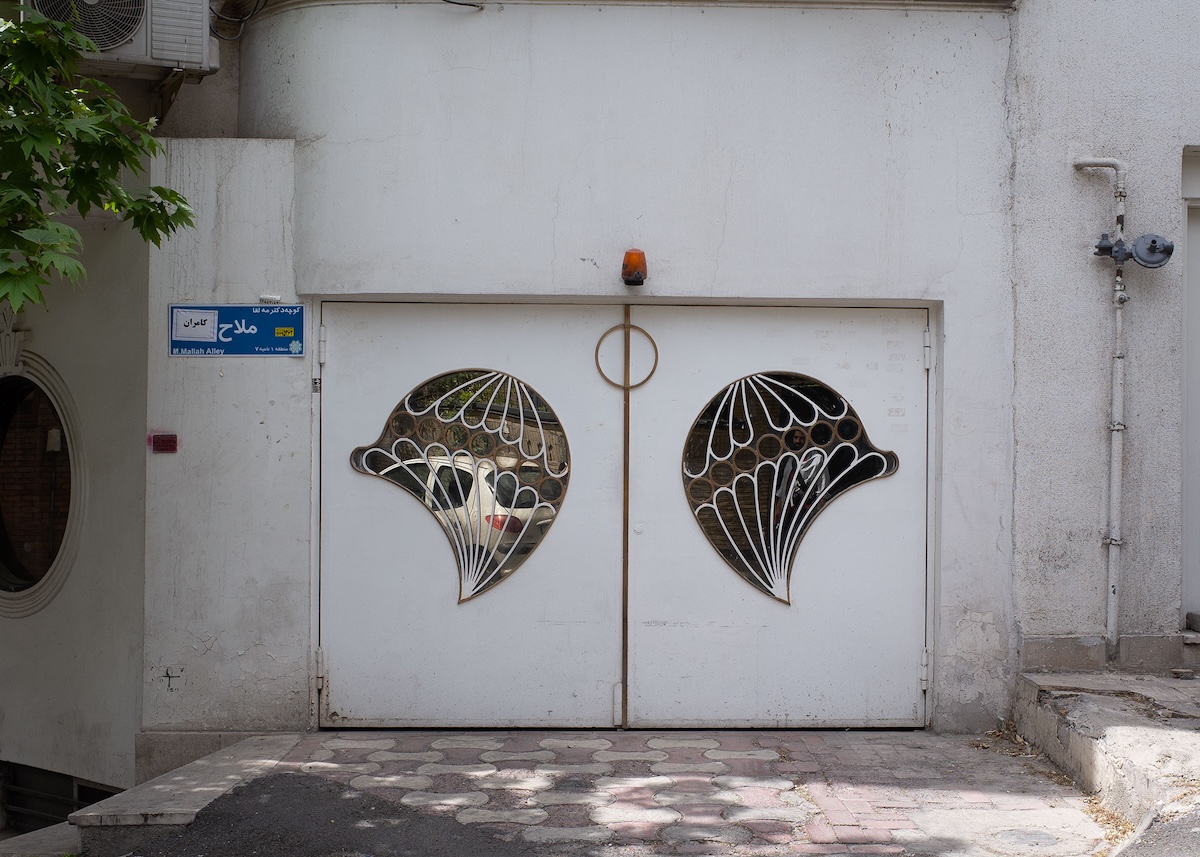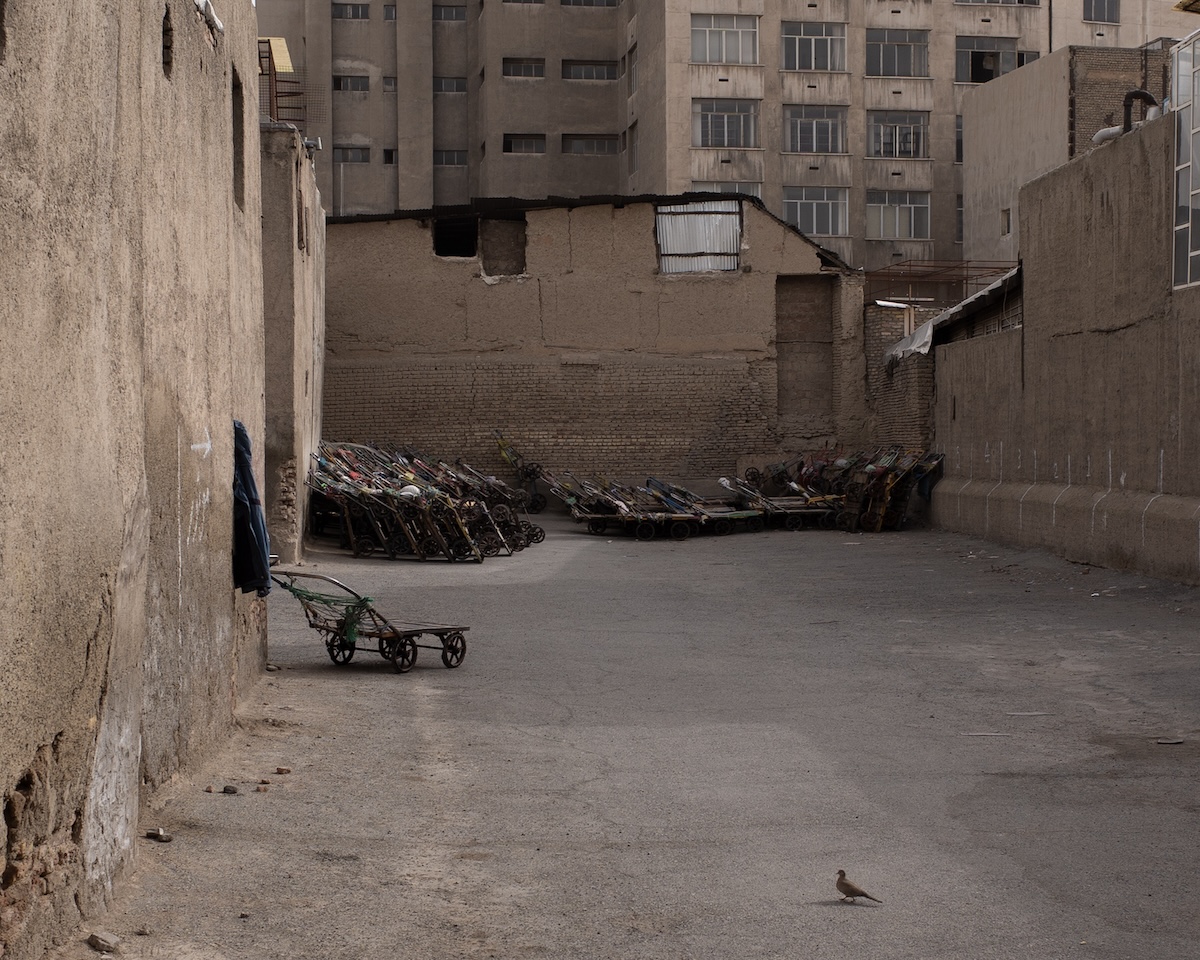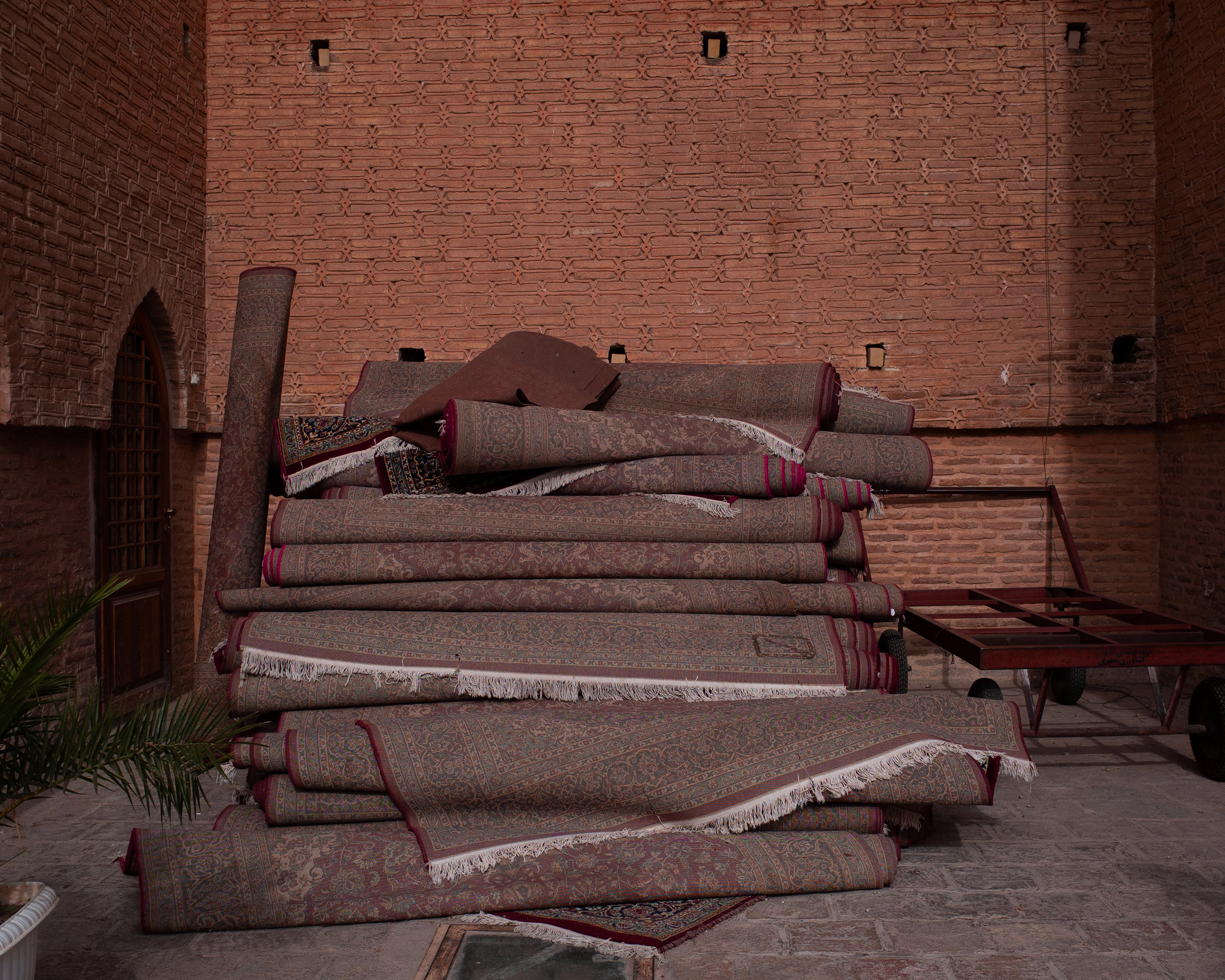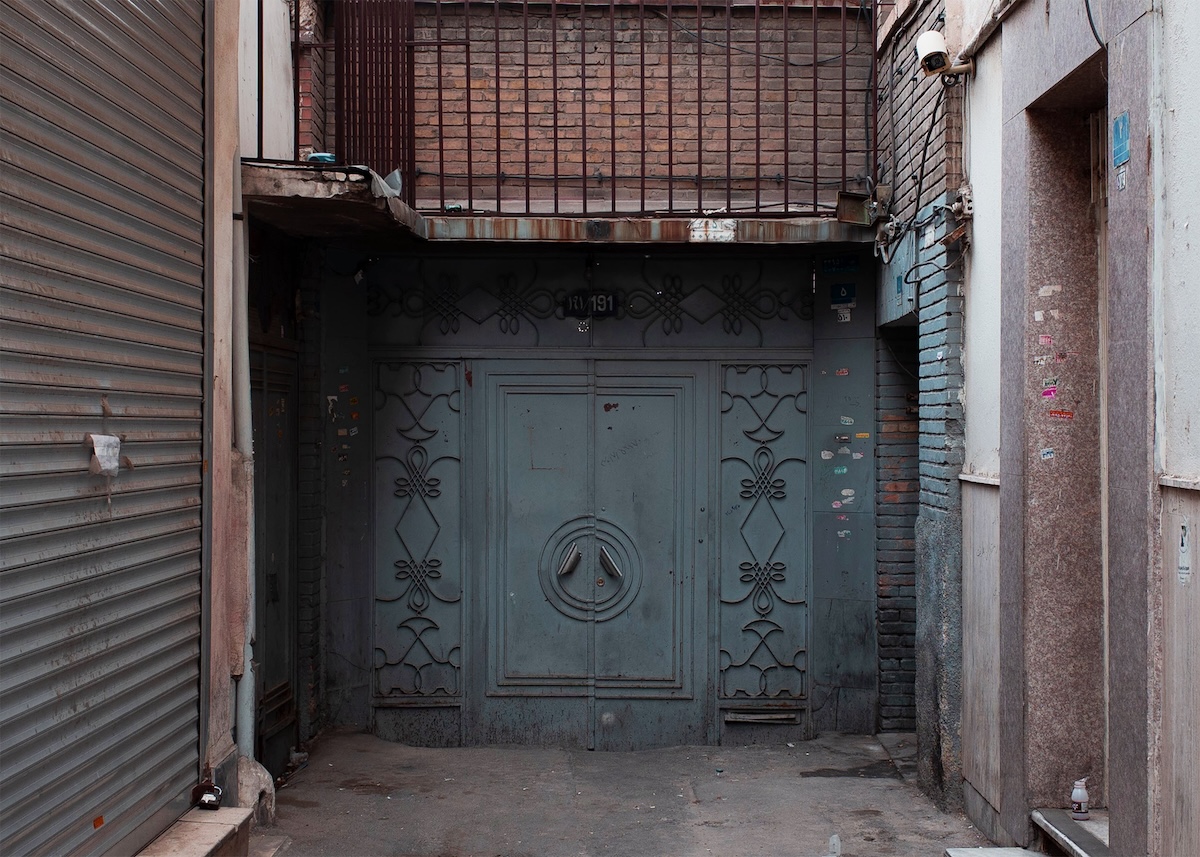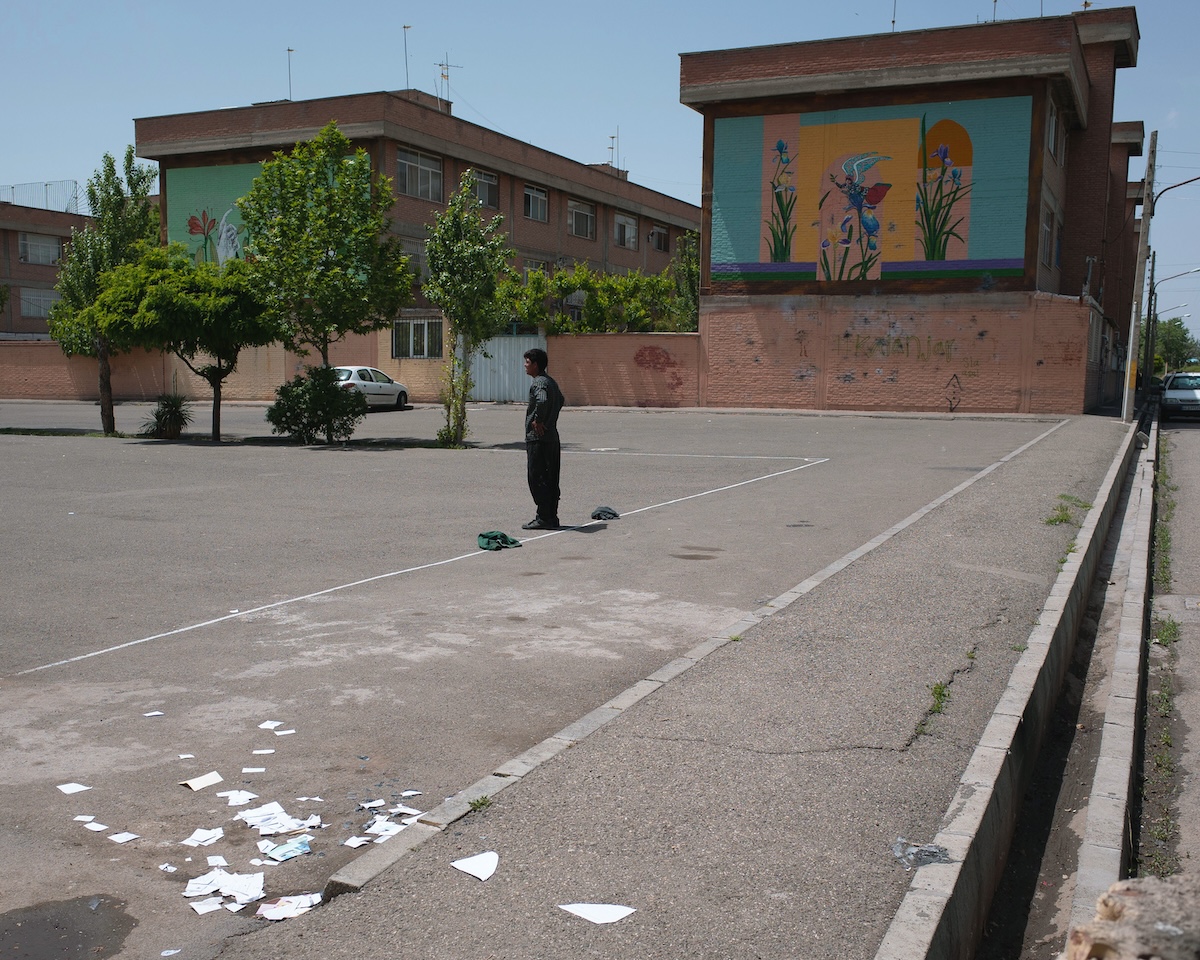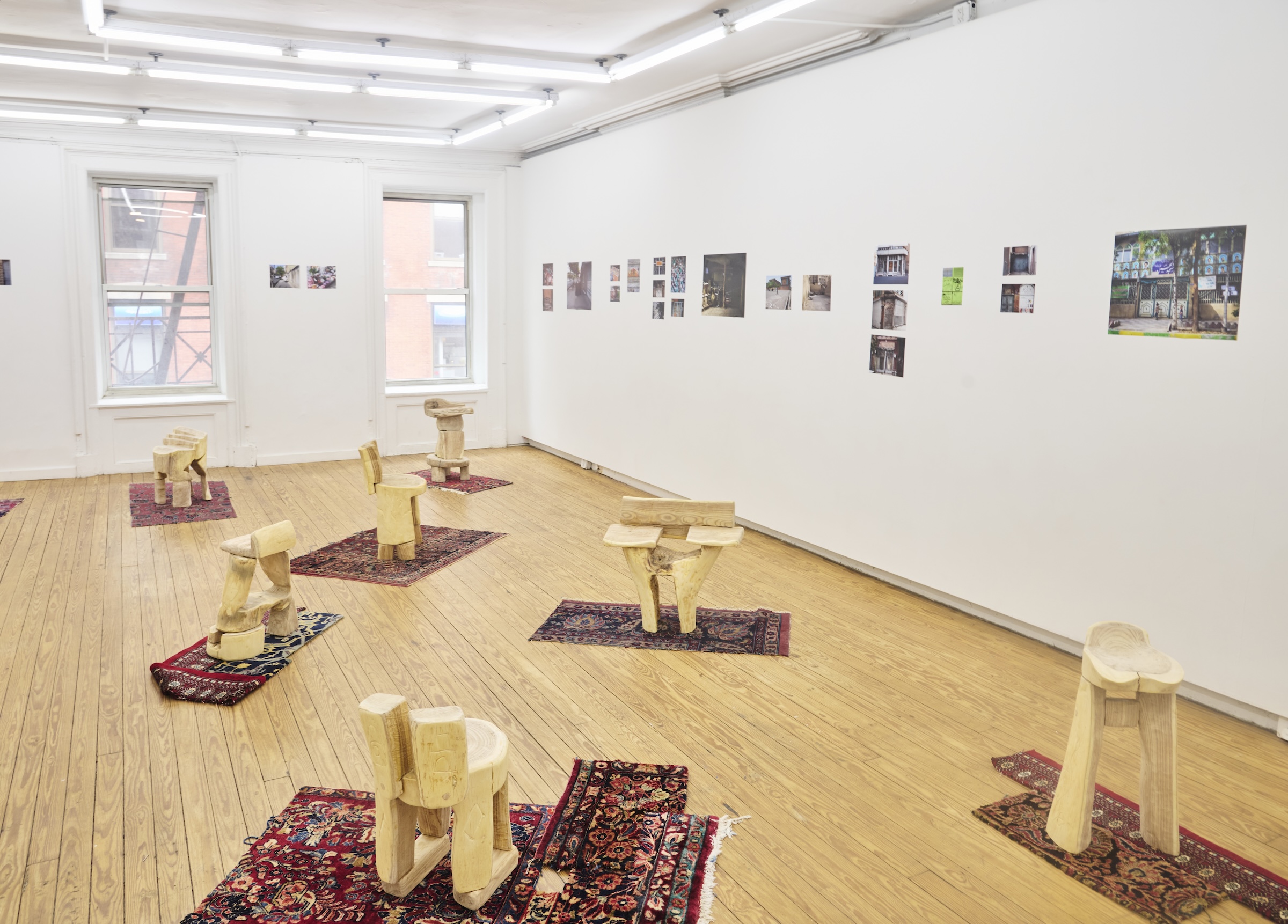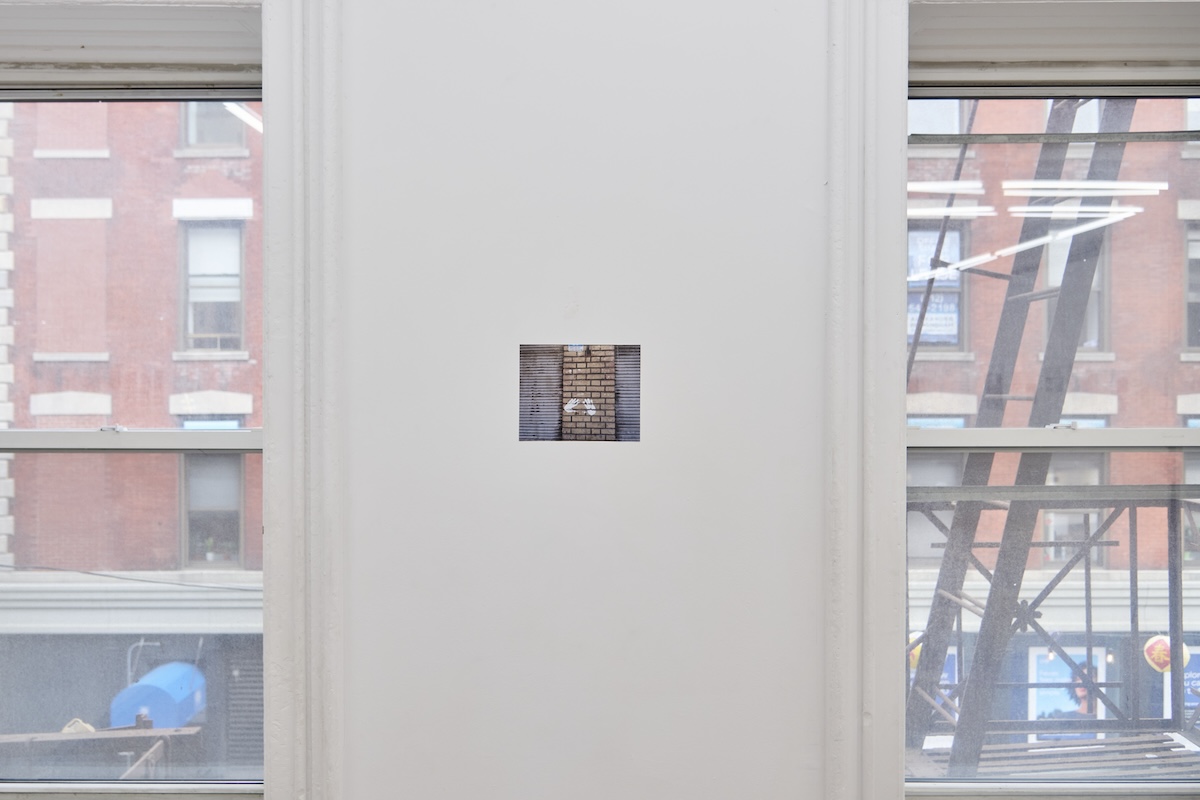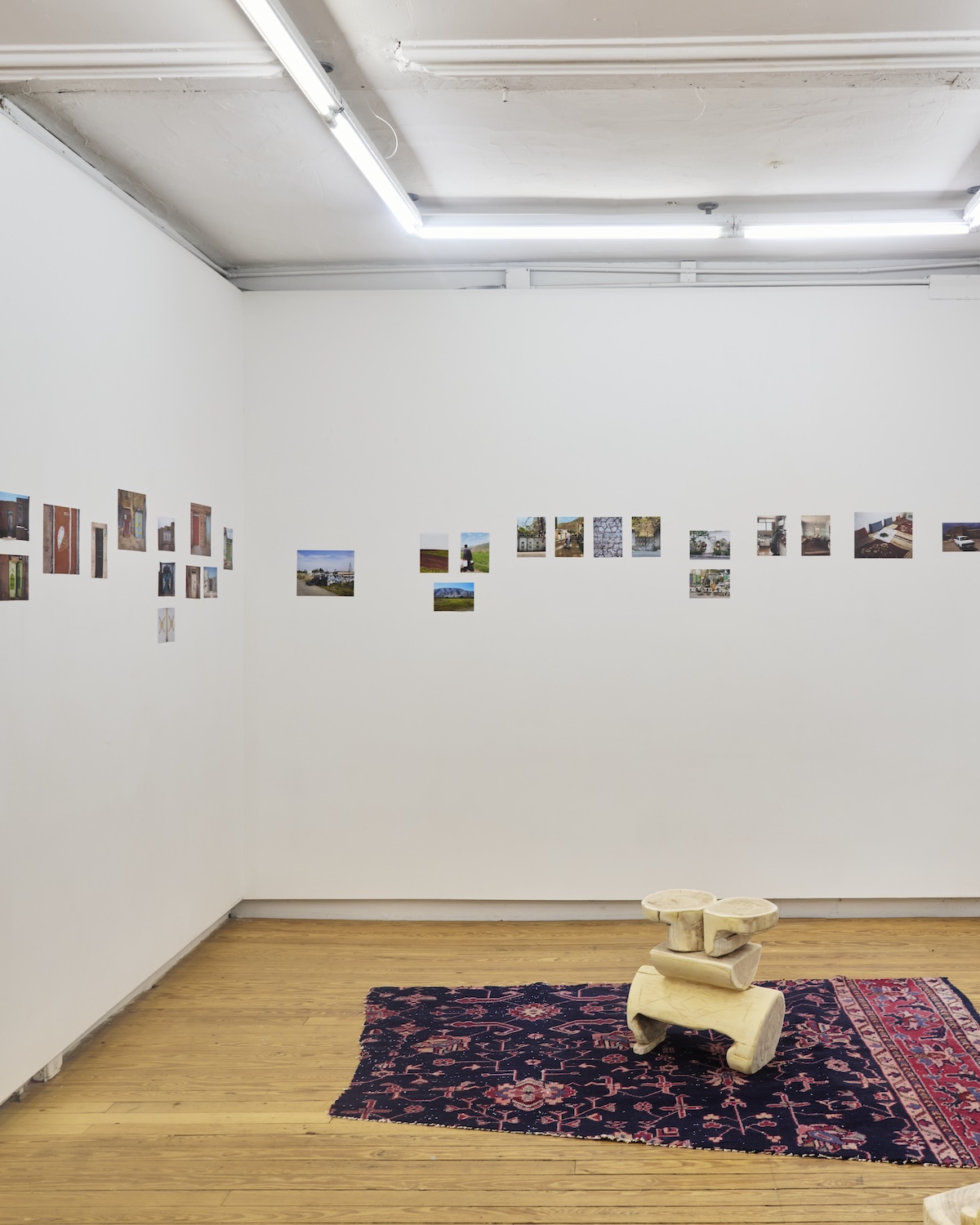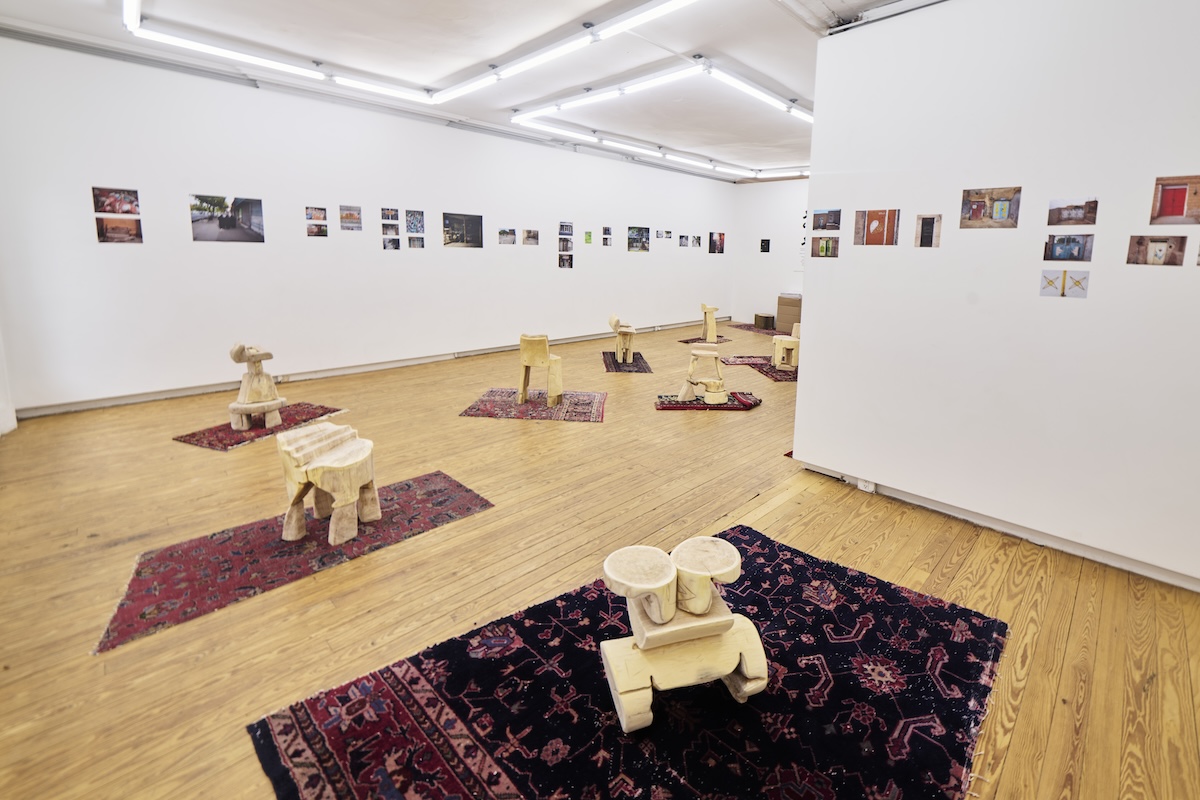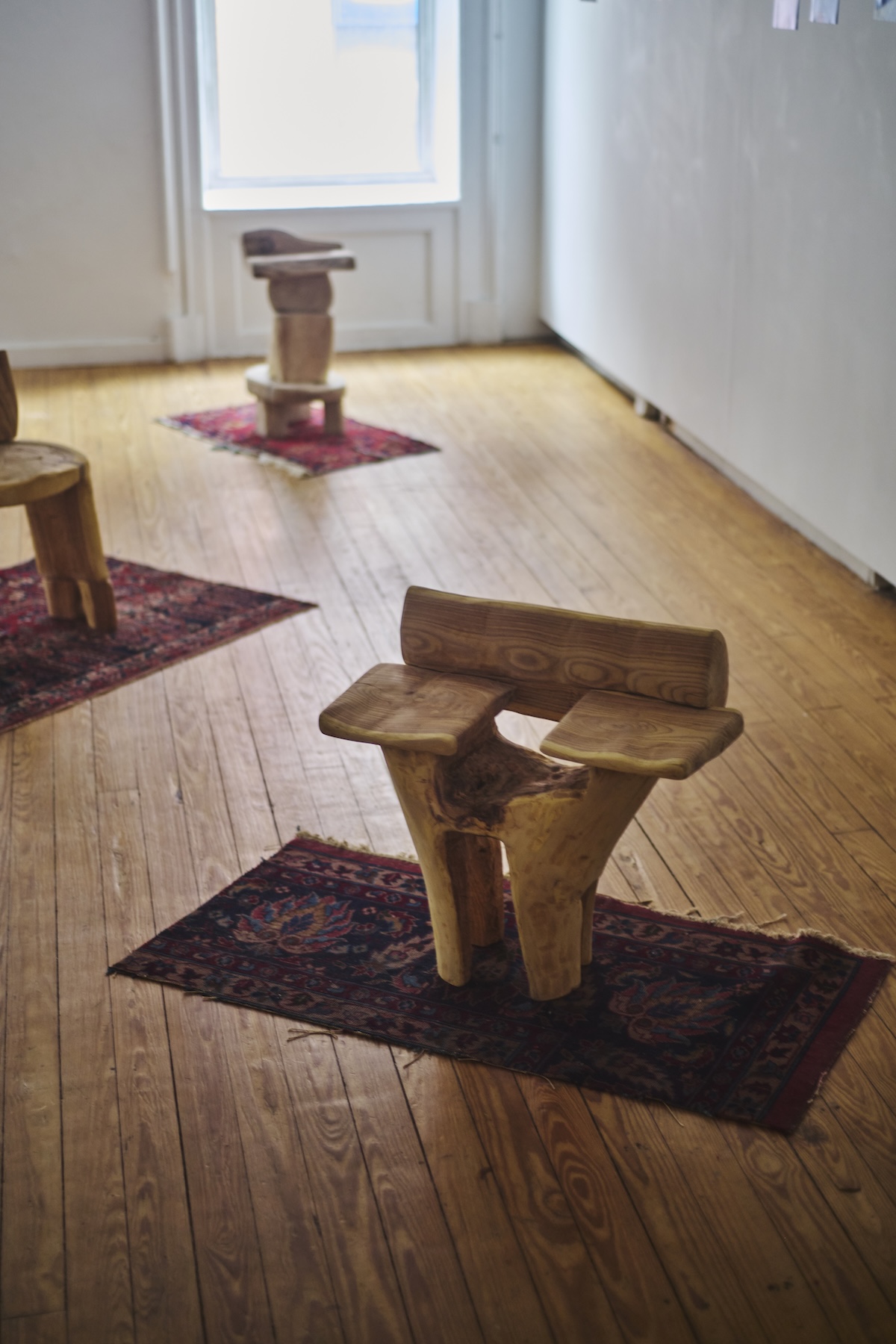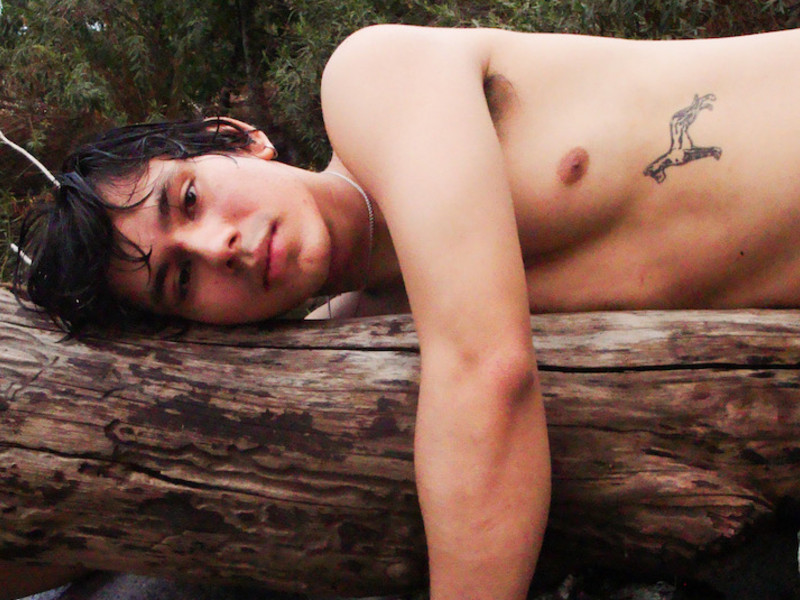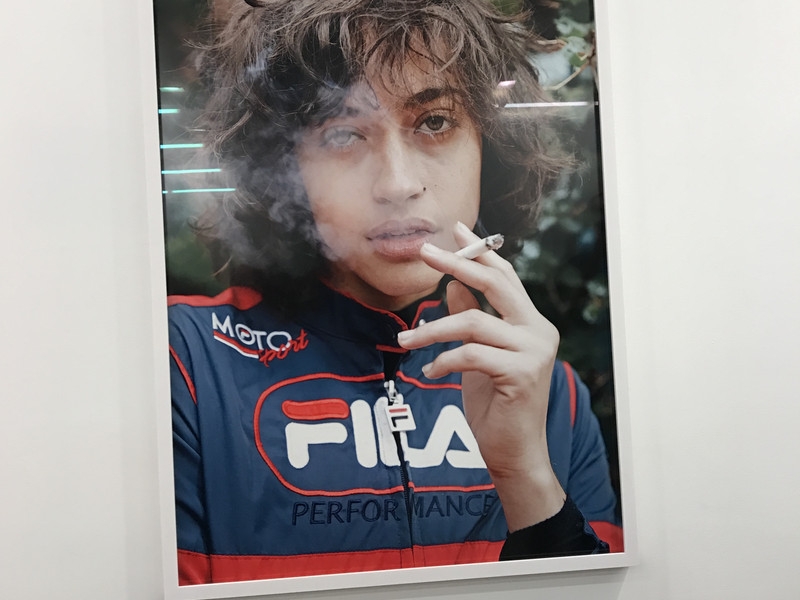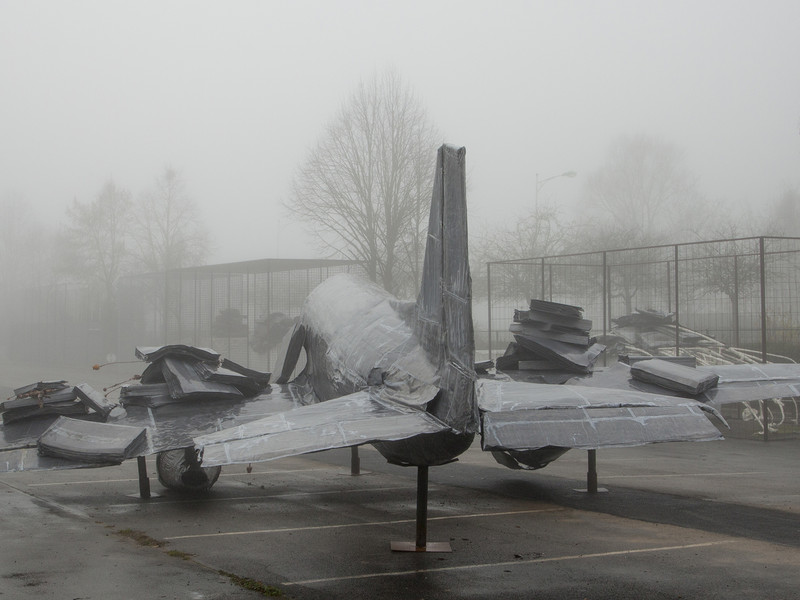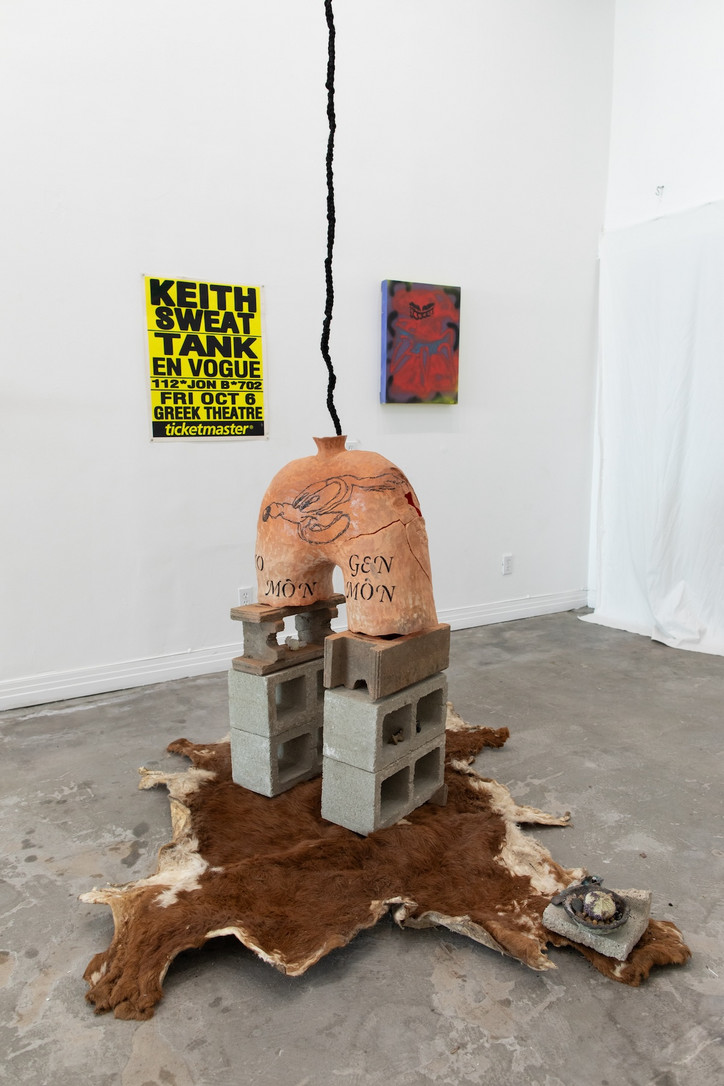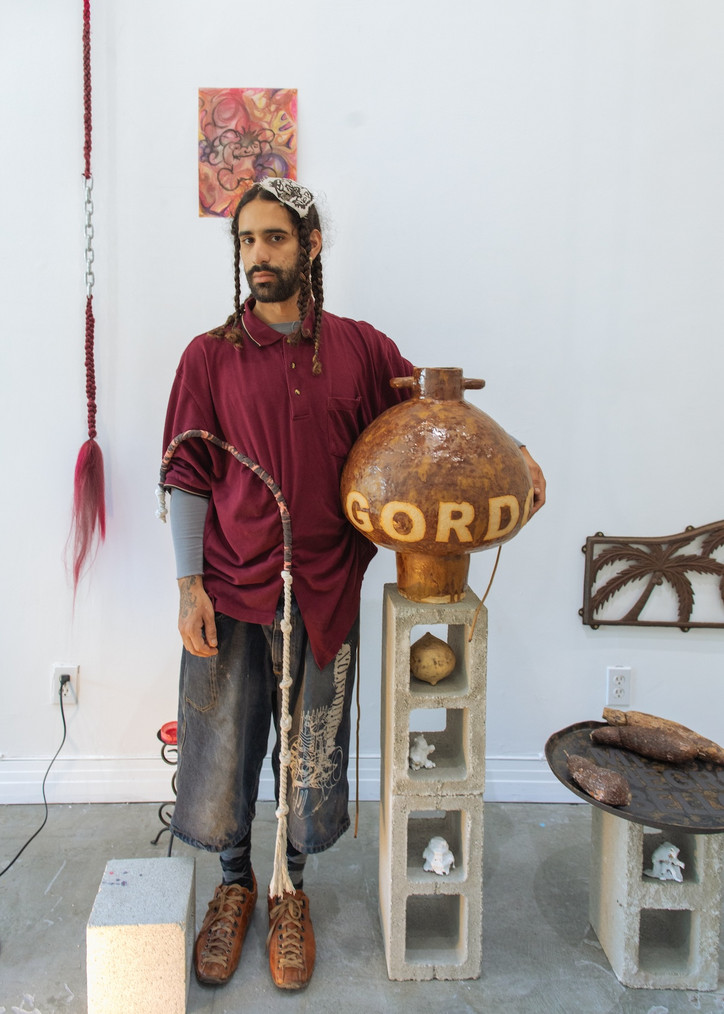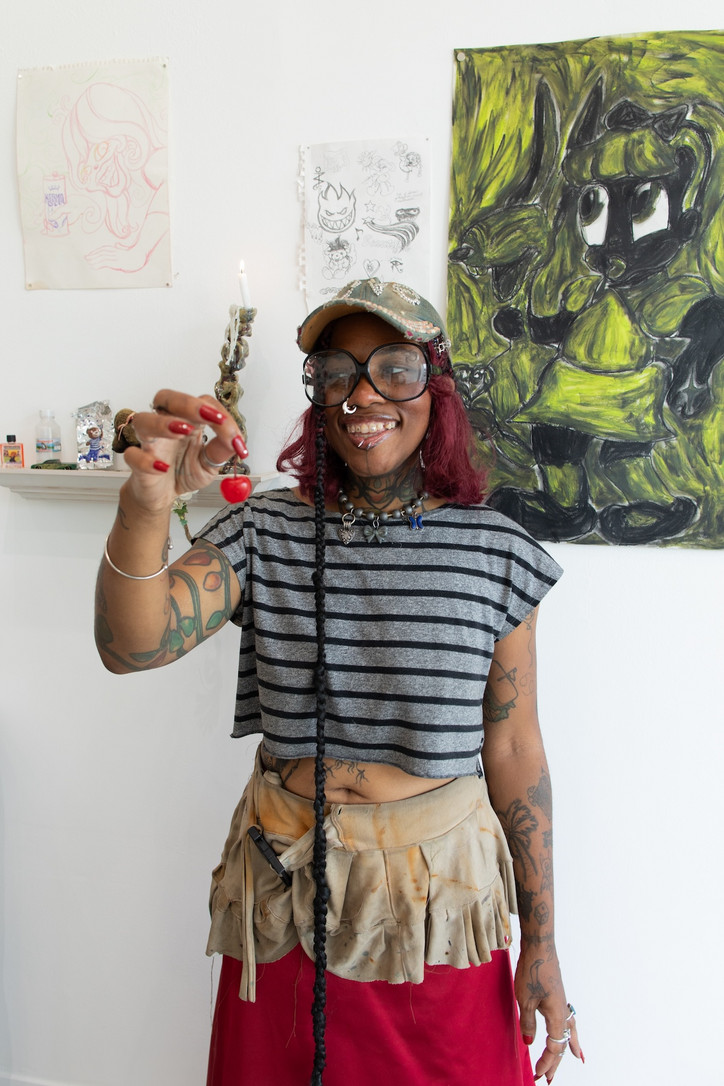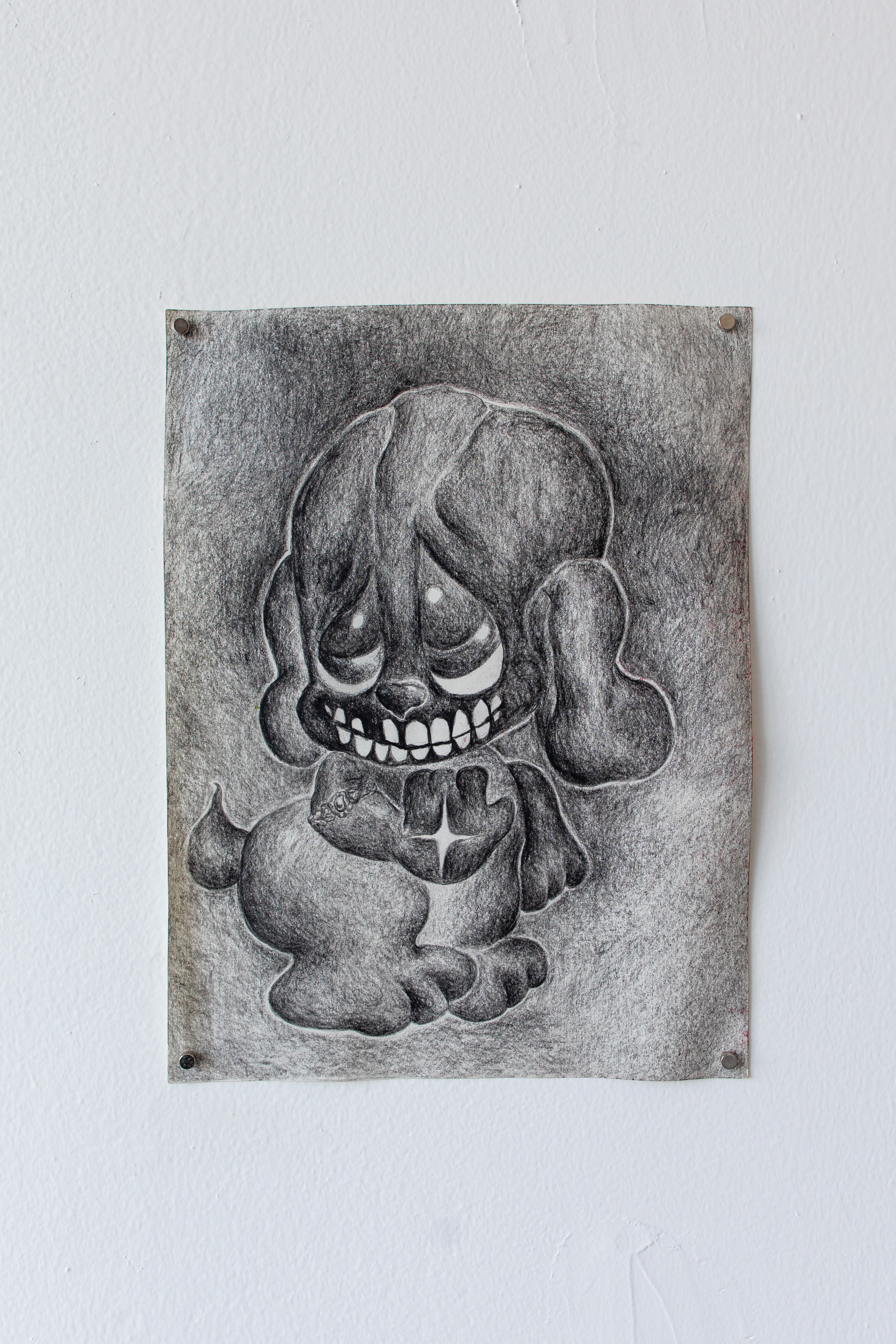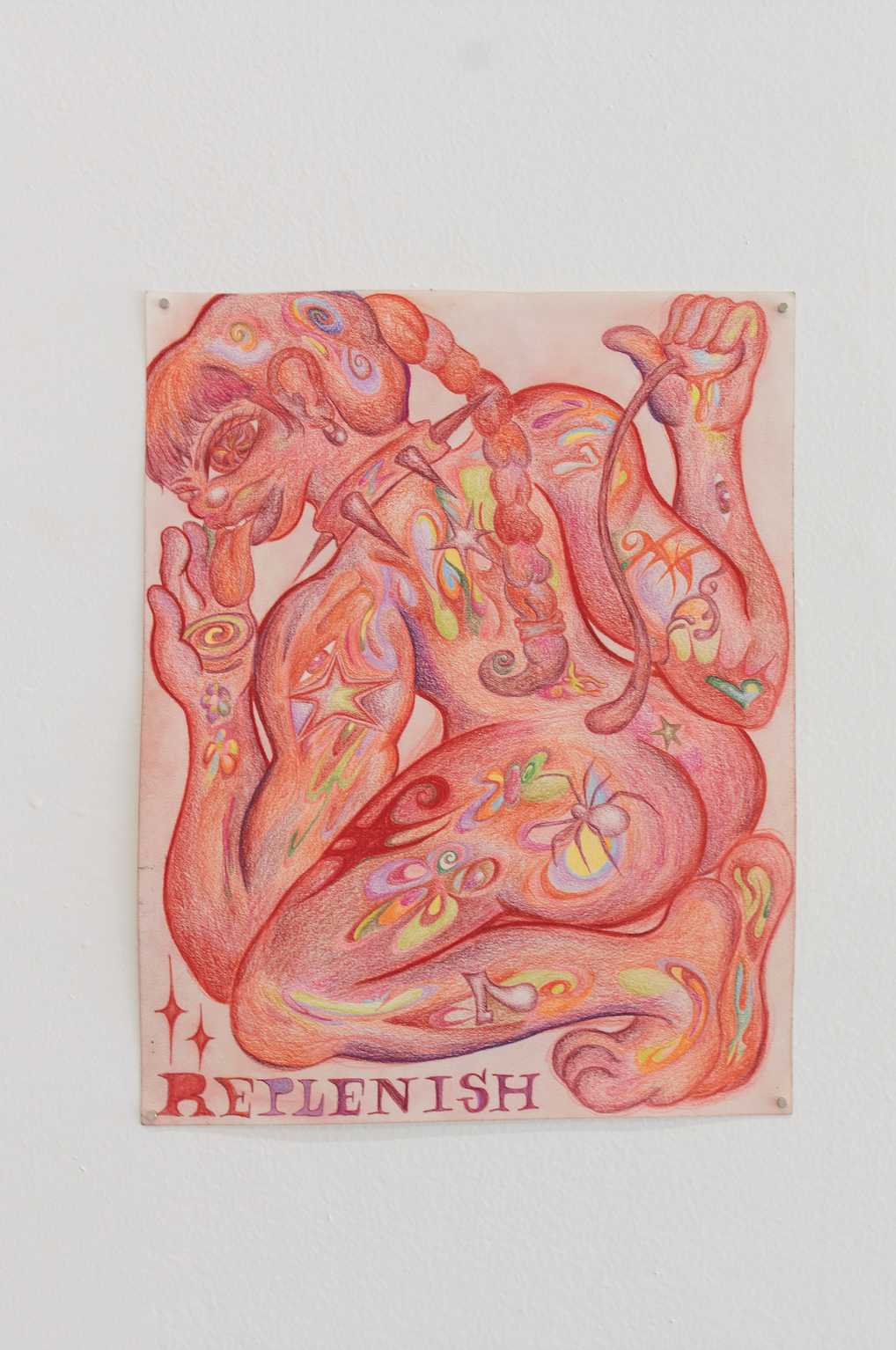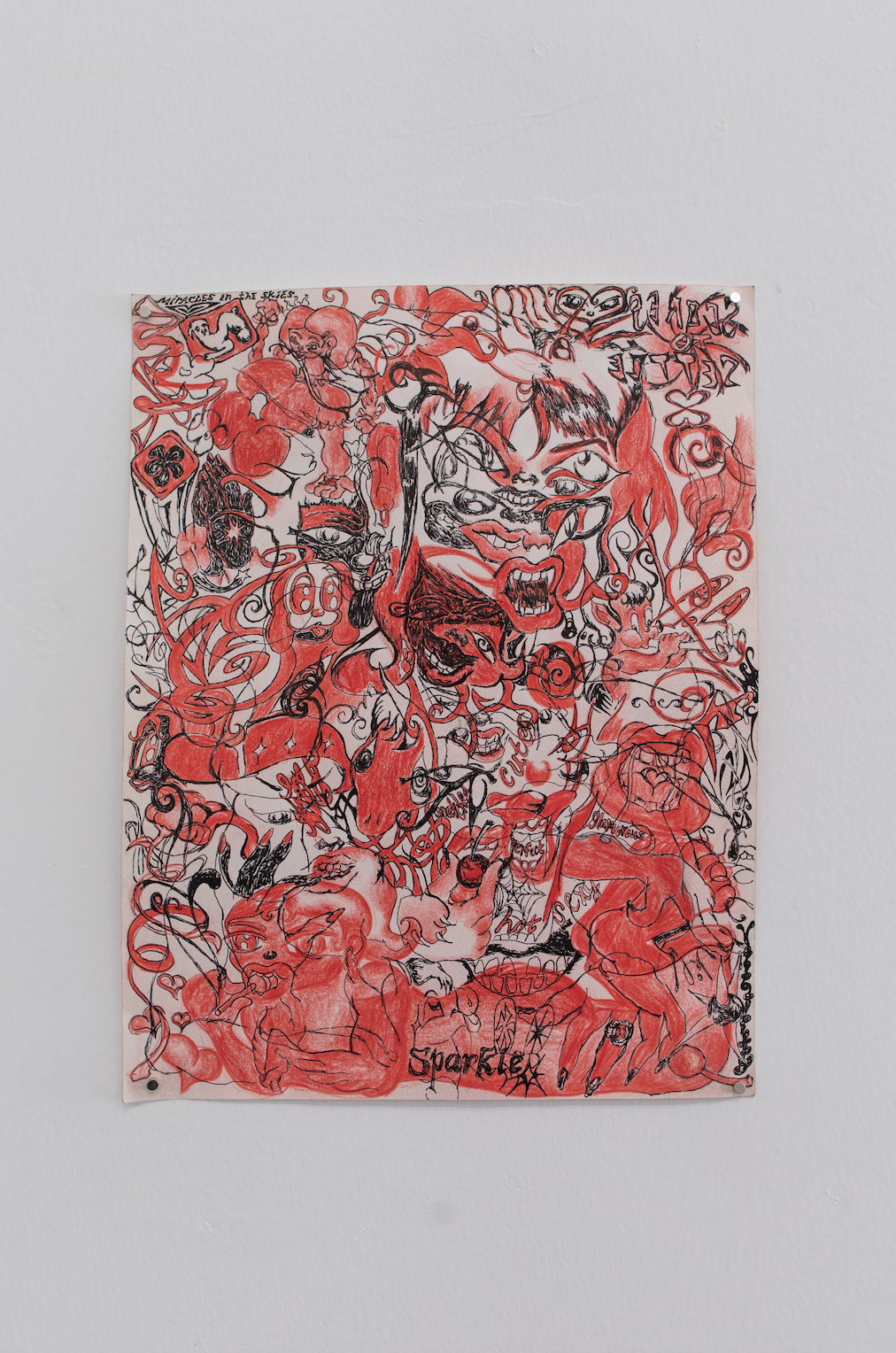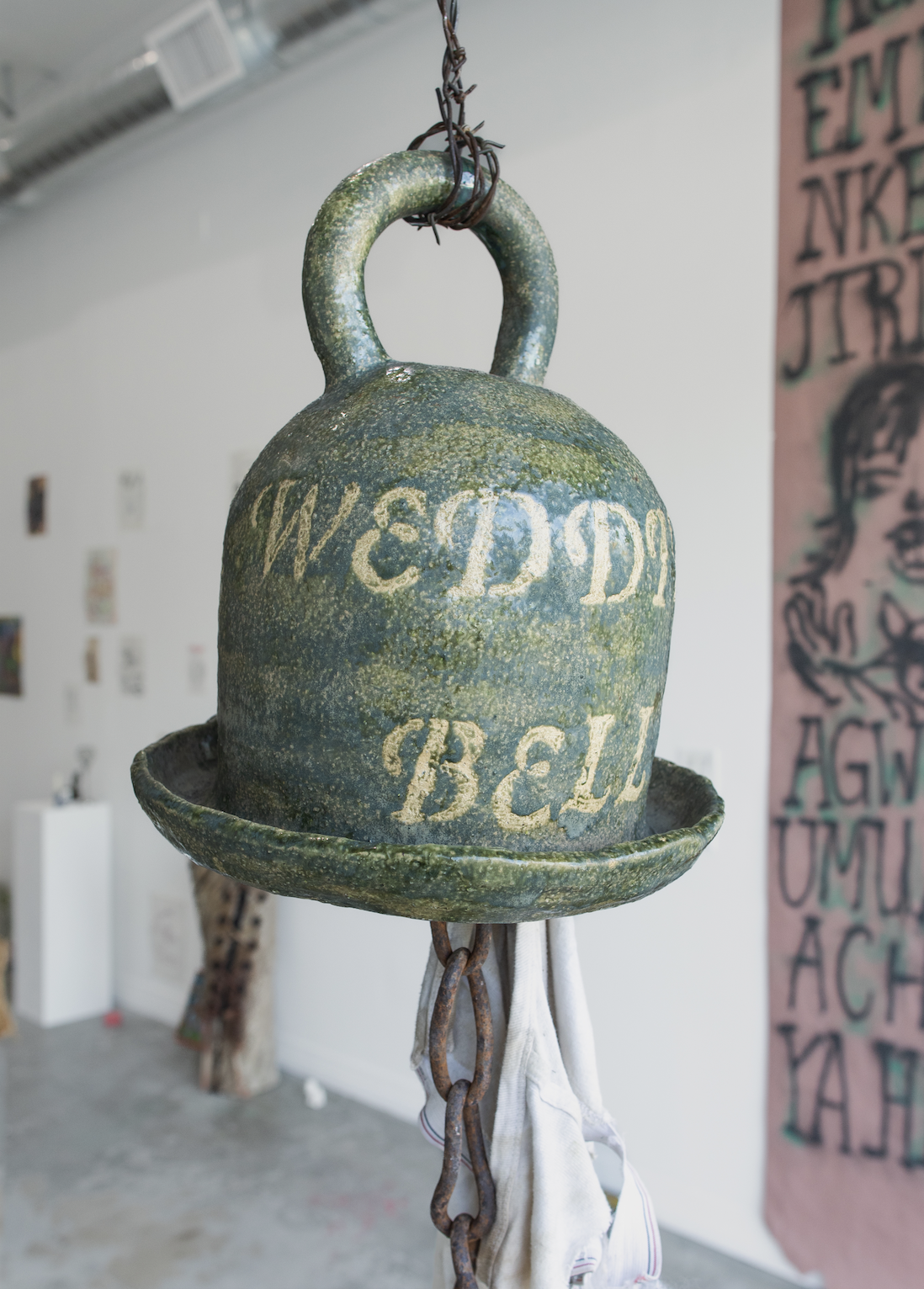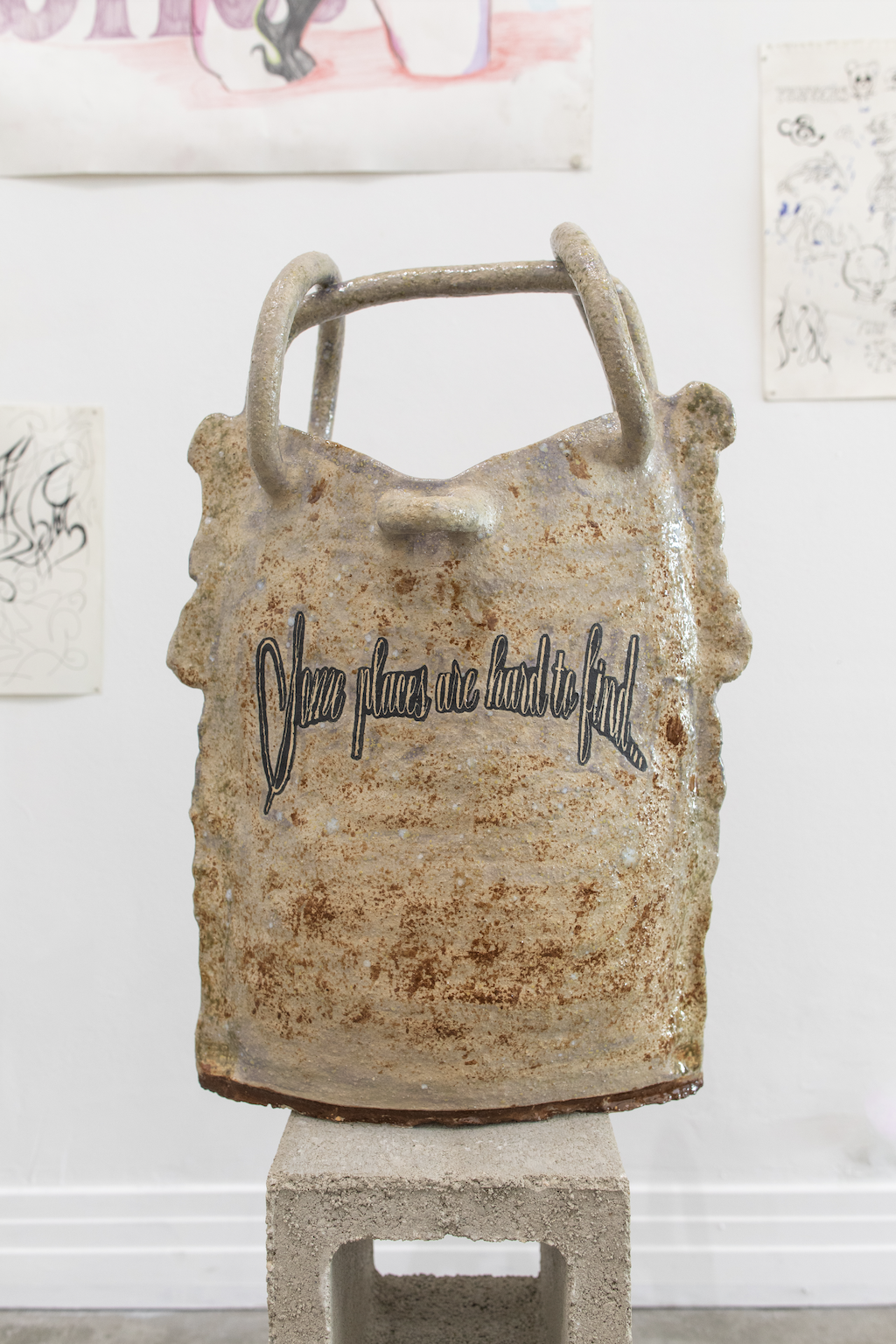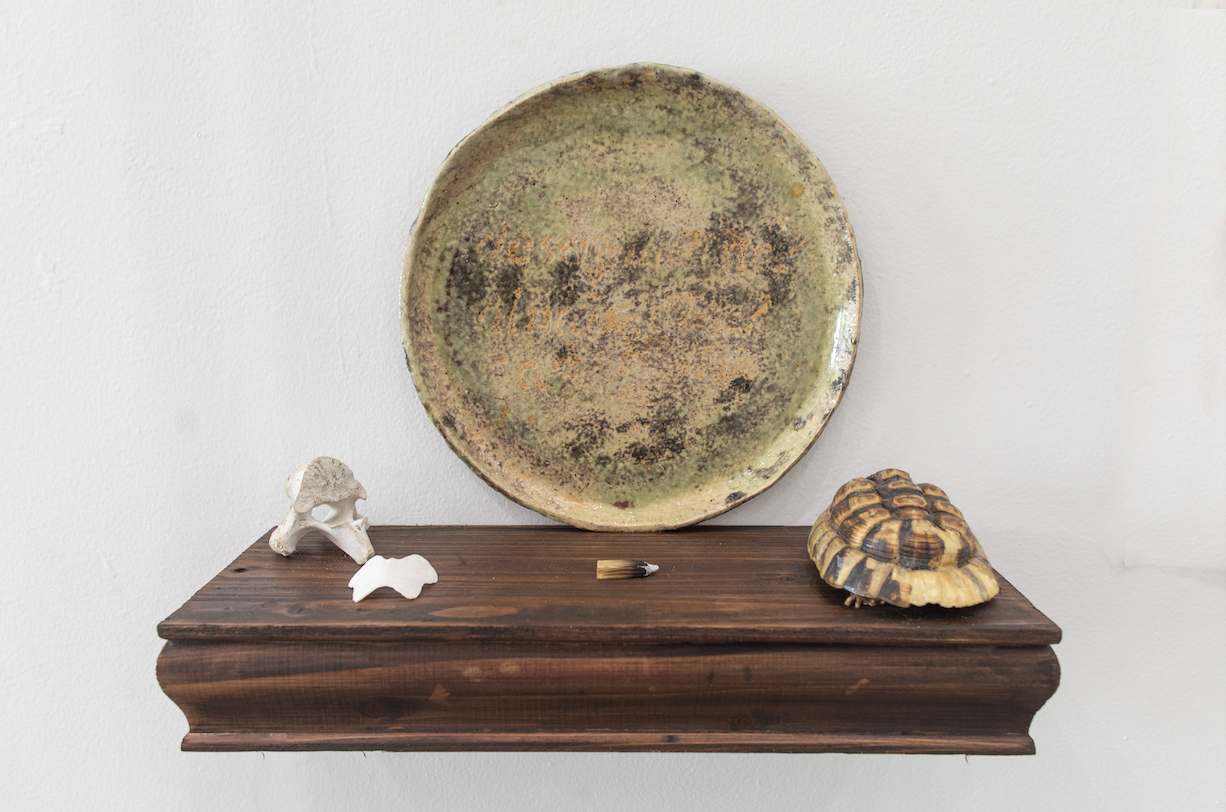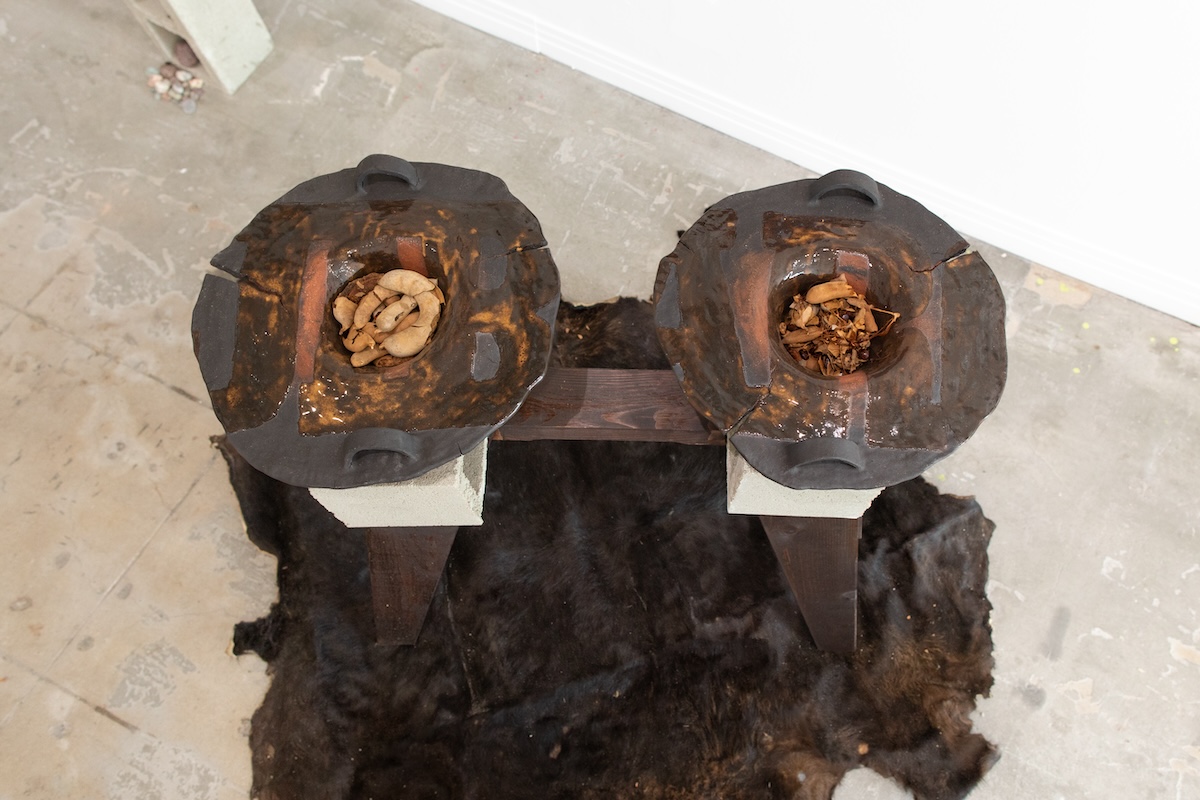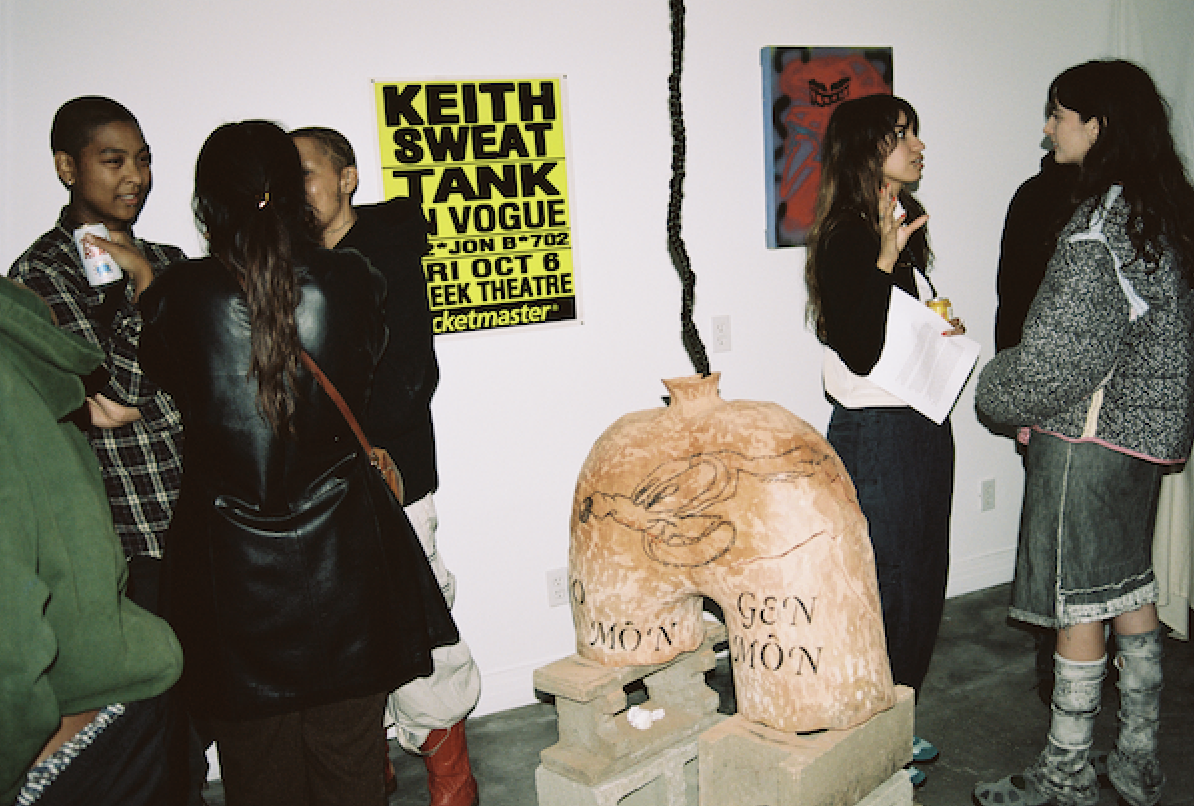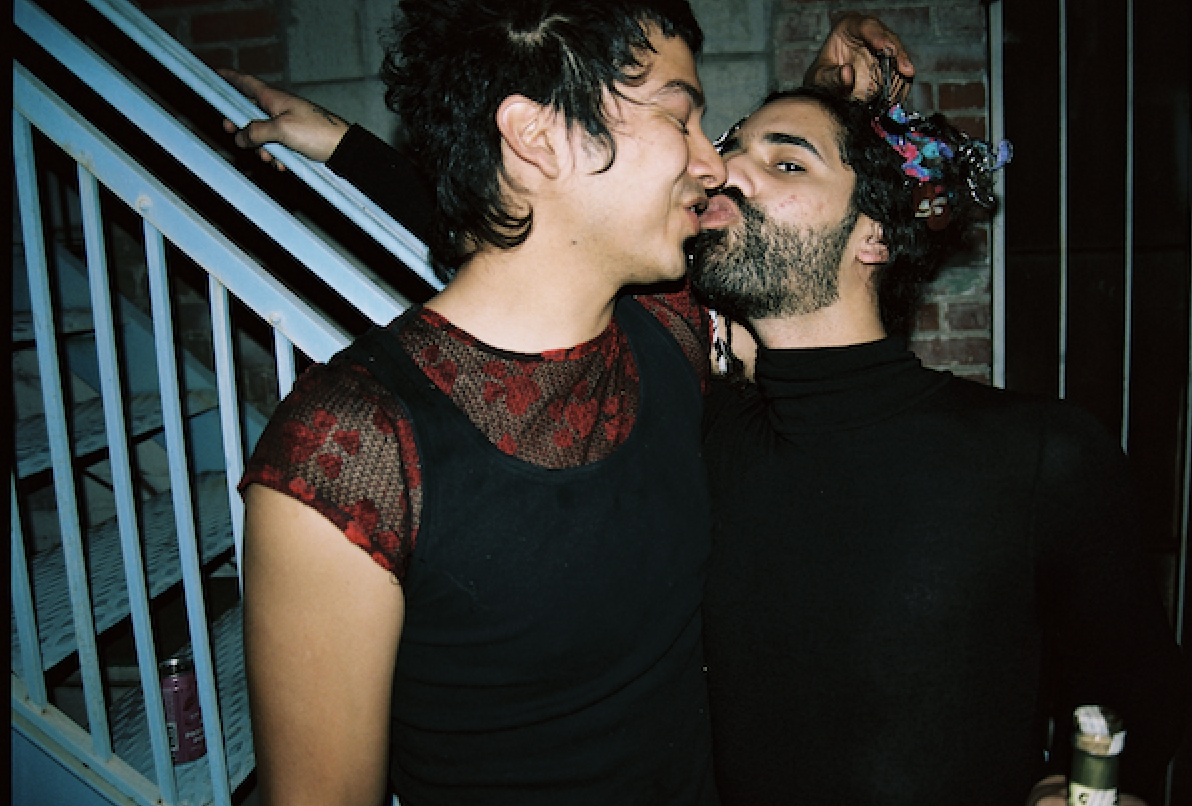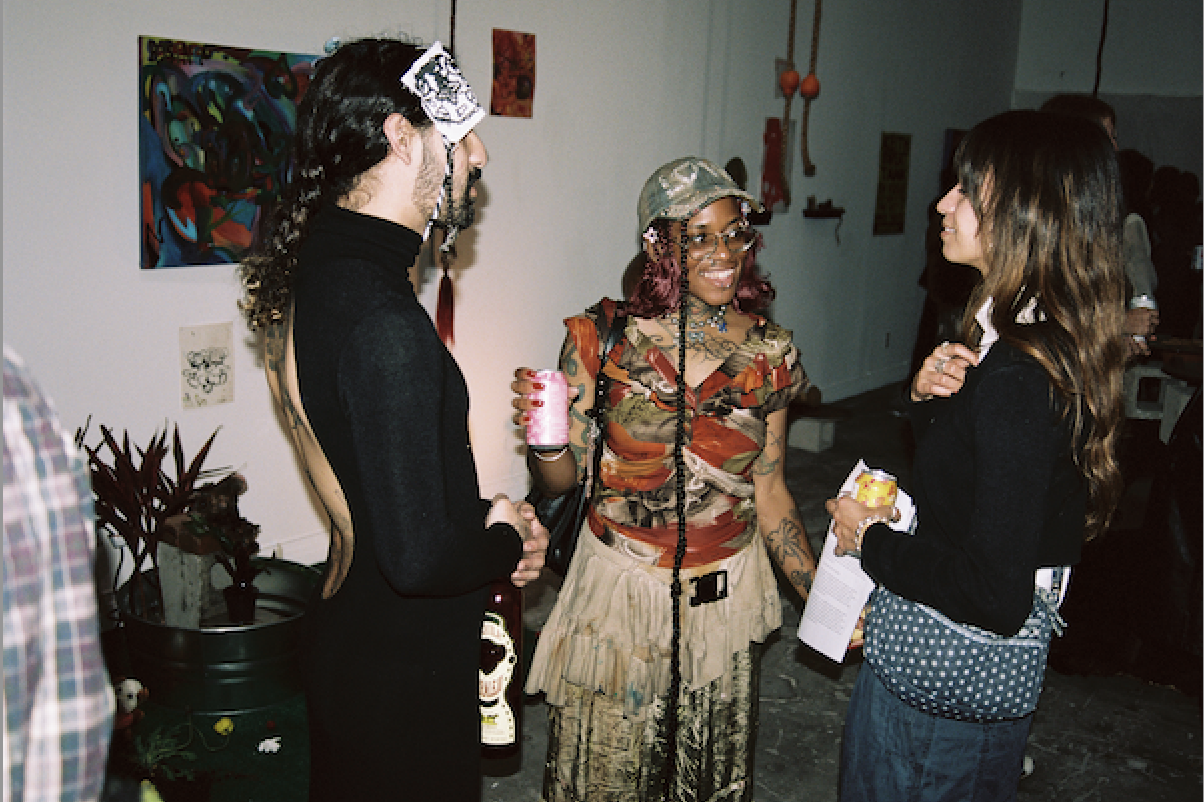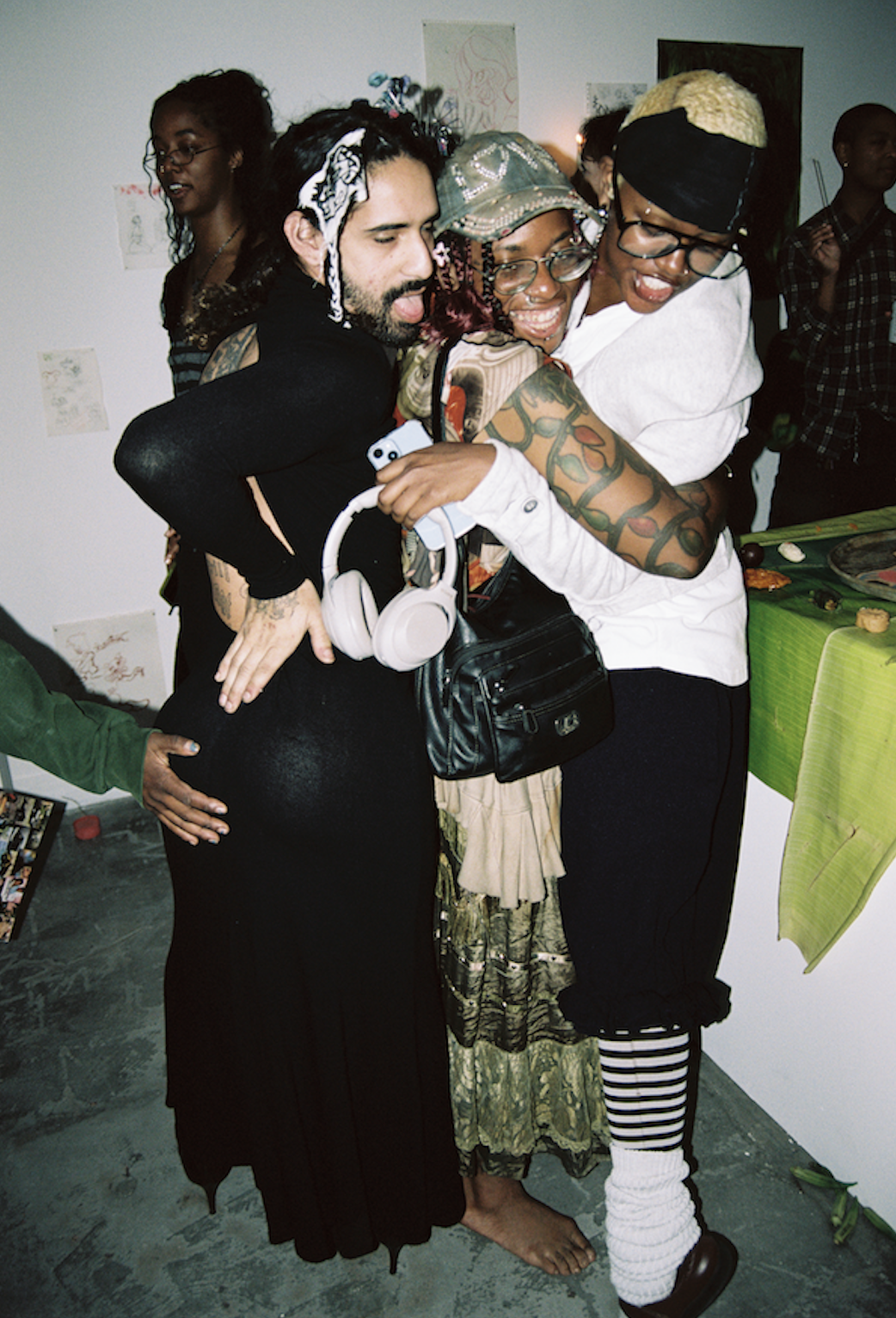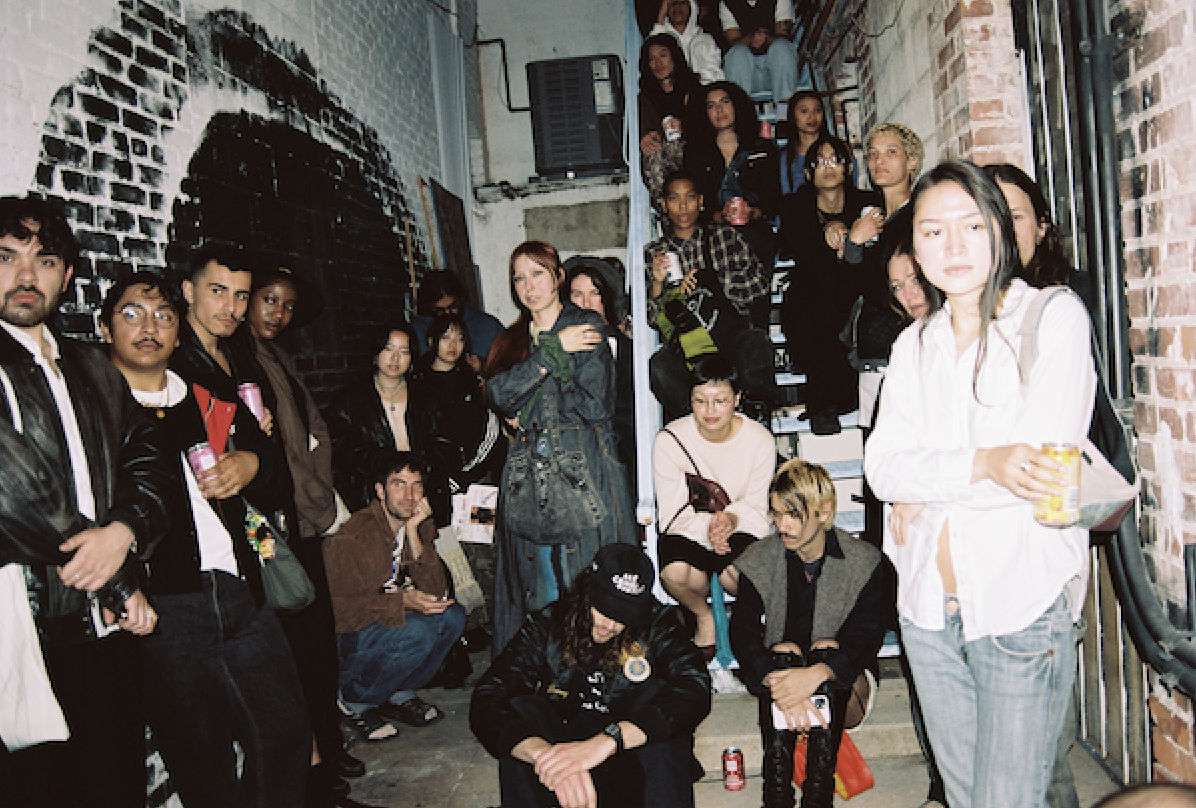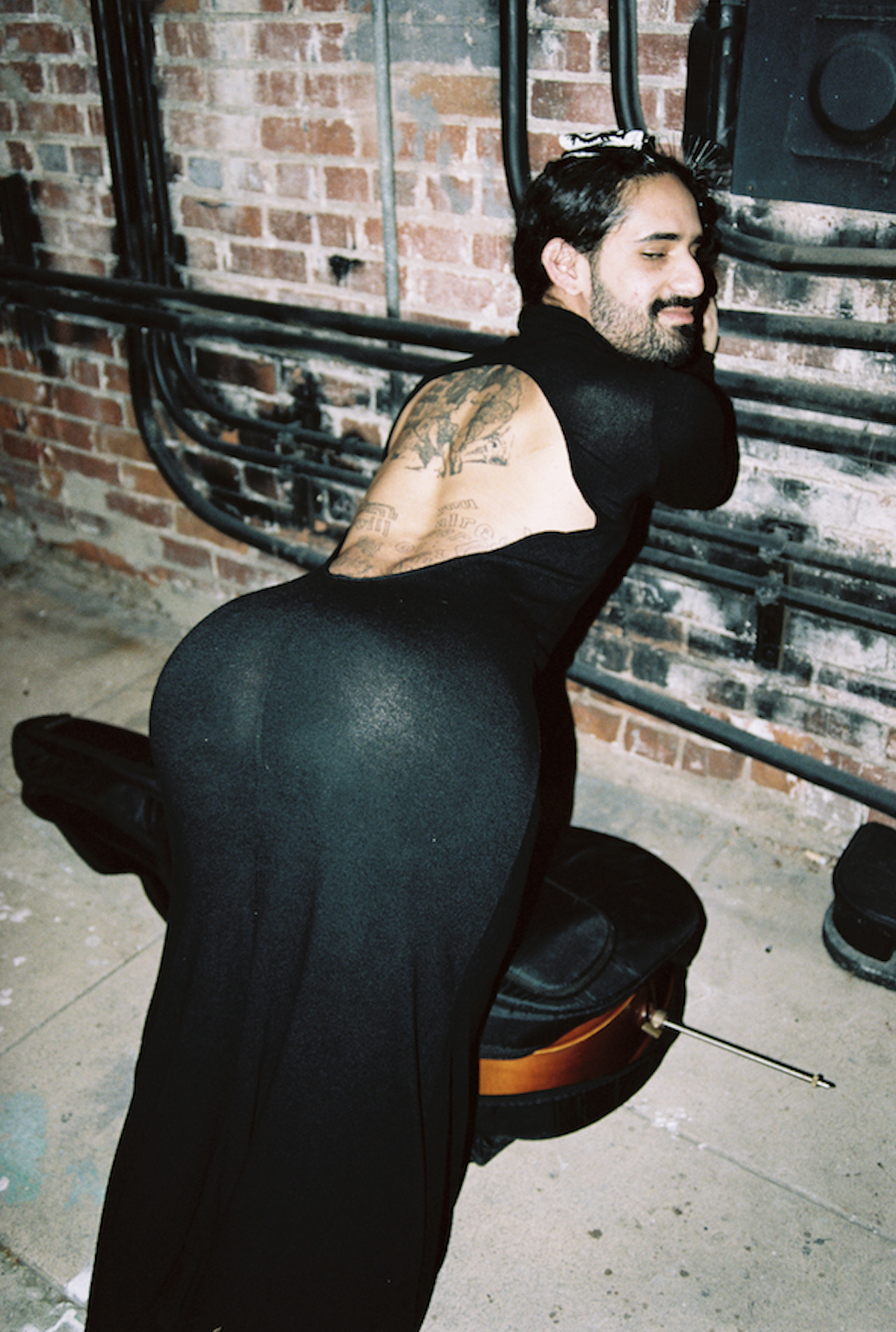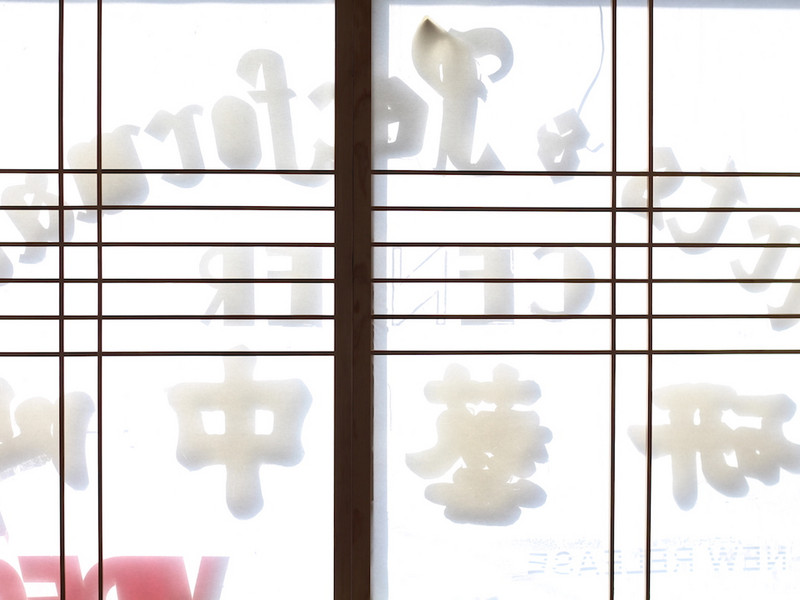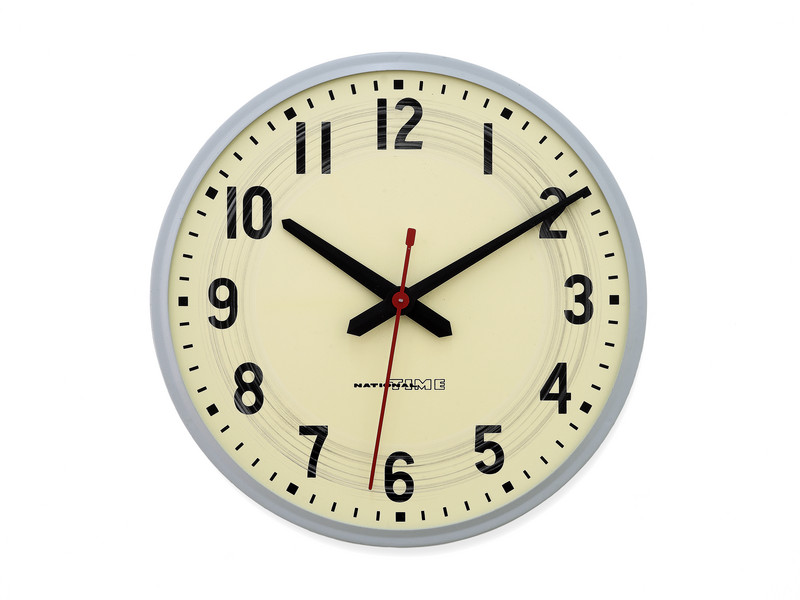In Conversation with Kenneth

...Is your head actually shaved?
I do it to a one.
My wife Cheryl used to shave her head. Well, not really. She did it for a video. Her hair was very short. Women look really beautiful with shaved heads... When a man does it it’s because he’s going bald. Usually I mean.
Okay, should we talk about the exhibition?
Is this the interview? We should start it with talks about baldness because Walter Benjamin had a great head of hair and he moved like a tortoise. He was this big lugubrious fellow who lurched through life very slowly, analysing everything very carefully.
Weird. How did you get into Benjamin?
I knew about his work as an art student. You know, you learn about Walter Benjamin’s Art in the Age of Mechanical Reproduction. That’s kind of the only essay you read. But also, when I was a student there was a series of books that were really great and these would be in bookstores just begging for you to pull them off the shelf. They were all the exact same and they’re kind of ugly but you know, back in the day when books weren’t designed well, these were really cool. Because somebody was doing a series, and look at the great names, Reflections, Illuminations.
And Hannah Arendt wrote the introduction. That’s incredible.
Oh, so then they had the imprimatur of counter-culture on them. And you know, they look serious and they look sober with a cool old black and white photo of an intellectual. But when you start to read him he predicts everything. He’s the media theorist. He’s the first guy that wakes up in the electronic age and says, “hey, we’ve got to think about it.” Even back in the television age, he seemed to have a lot to say about that... He’s the first guy to deal with electronic media, so he seemed really contemporary even though he’s long dead.
I was wondering, could you tell me more about the book that you did in homage to Benjamin’s flaneur walks in Paris, the posthumously published one.
Did you ever read it? The Arcades Project... He sat in libraries for ten or fifteen years and pulled books off a shelf and sort of opened them randomly. When something would catch his eye, he started copying the passages out. He said, “The act of reading is the act of flying over landscape at 10,000 feet, but the act of copying is the act of walking on a road.” Nobody ever really knew whether it was supposed to be a study for a great theoretical work that was never written, or if this notion of fragments and accumulation in and of itself was a book... But actually, there’s proof both ways. One saying yes it was going to be a study for a great book about Paris in the 19th Century, and the other hand say as it was is a great study about Paris in the 19th Century, as a bunch of fragments. So, I did the same thing, but for New York in the 20th Century.
What’s so specific about New York? I mean, they’re both cities that have their reputation precede them, in a way. You go to New York with the ideal of the city in mind that’s been fed to you through films.
Well, that’s exactly right. New York is the capital of the 20th Century... Our image of New York is shaped through film, and our image of Paris is shaped through photography and lithography. So, you have a black and white city, and you have a black and white and color city... I think it’s kind of a great analogy for Benjamin’s book and my book. His book is all about depth, it’s all about the barricades and Marx and Housmann and social revolution. Mine is all about pop art, jazz, skyscrapers, and advertising. There’s some crossover.
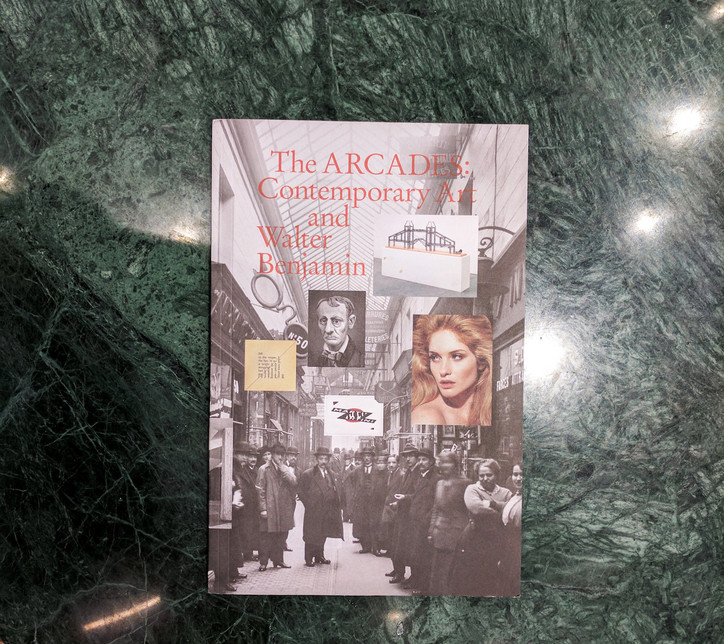
For the exhibition at the Jewish Museum, you also re-create that whole thing and turn it into poetry. Did you only take fragments that you’d already chosen from your New York book and the Walter Benjamin, or did you choose completely new ones as well?
It was a whole new project. They liked the Benjamin book which is why I was brought in to, what do they call it, convolute, or annotate, the show. But basically, the show was about the arcades project and contemporary art, so it wasn’t about New York and it wasn’t about me so much. So, what I did was, for each convolute, I looked at the artwork they selected and then I looked at the convolute itself, and I tried to find language that addressed both the contemporary artwork and the historical literary work. That’s how I came up with all those texts.
I thought the exhibition was so interesting.... It’s still in my mind. Maybe because I’m a Benjamin fangirl. I liked that the curation was so odd. I usually really like seamless exhibitions, where you walk in and it immerses you fully, and I think that exhibition almost tried to do that and didn't because so much was happening. For some reason, it might have been the space, but it didn’t feel like a journey as much. But then again, if you’re walking through arcades, it doesn’t feel like a journey, either, because everything’s a bit of a mish mash.
I think that’s what they were trying for. It has to be something of information overload. It has to be something that’s both fragmented and cohesive. It has to be something that draws your attention and something else that pulls your attention away from it. It has to be something that is oriented ideas of display, window display, surrealism, and disjunction... A lot of people couldn’t handle that. But if you’re going to do a show about a guy that collected information and theorise the collection of information, then you’ve got to do a show that way.
...For the first twenty years of the 20th Century, it was all about media and media saturation and completely new ways of realising the world... There’s a paradigm shift, the way information is playing out. In the roots of Benjamin and surrealism are the roots of the entire internet as we know it today. Everybody thinks this technology is so new and it’s never really happened before. In some ways it’s true, and in other ways it’s really older. It’s haunt-ology, it’s being haunted by previous technologies.
There’s a paradigm shift all the time.
...There’s something about the work that is ringing true today and it’s carrying forth, and I think that this show is really trying to connect with that energy in contemporary art. Now, everybody sort of seems to be a media theorist, seems to be writing on it. I don’t know if for the digital age there’s going to be a single manifesto that encapsulates it the way that that one essay did. He was just way ahead of his time. I think that’s why we care.
